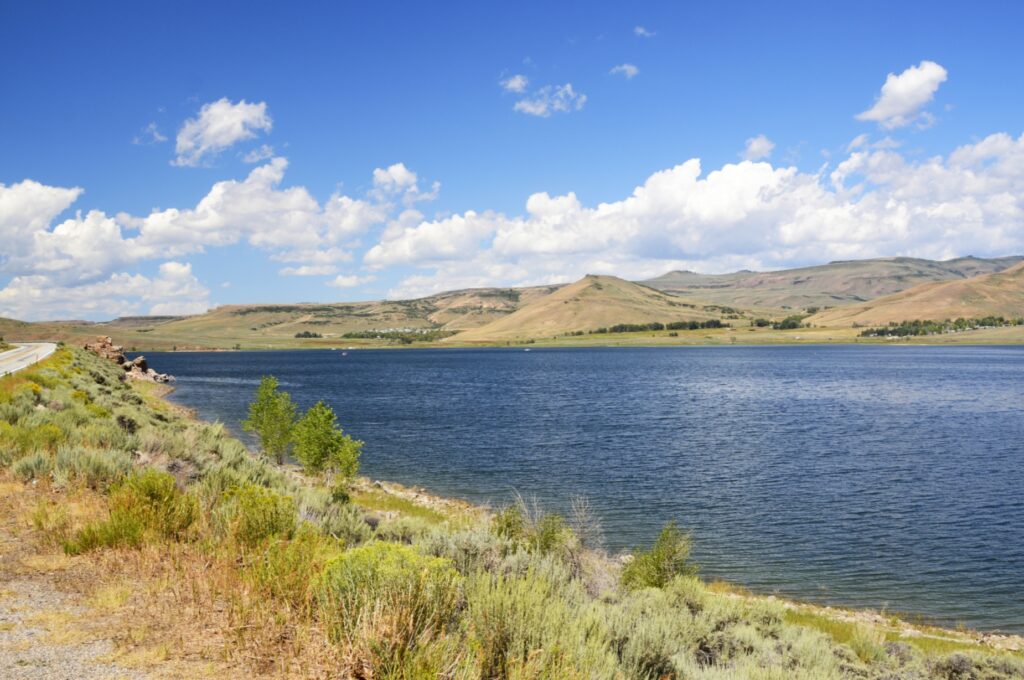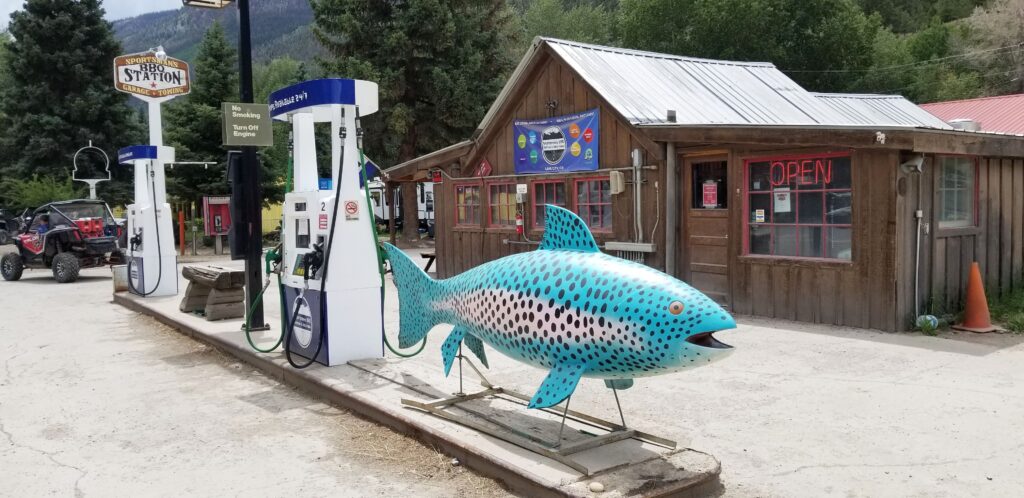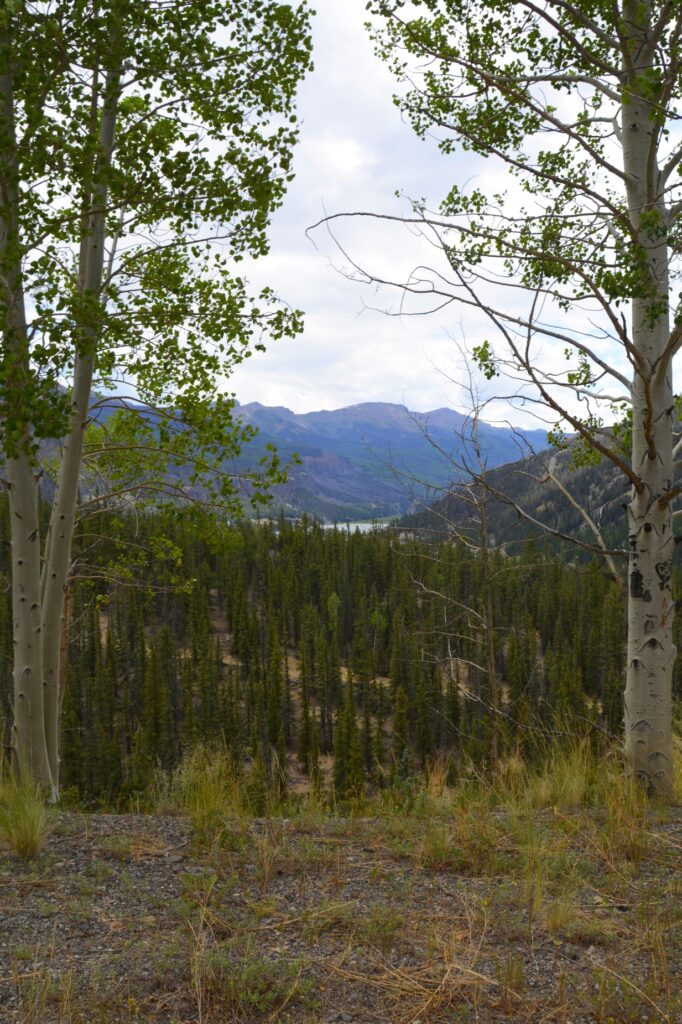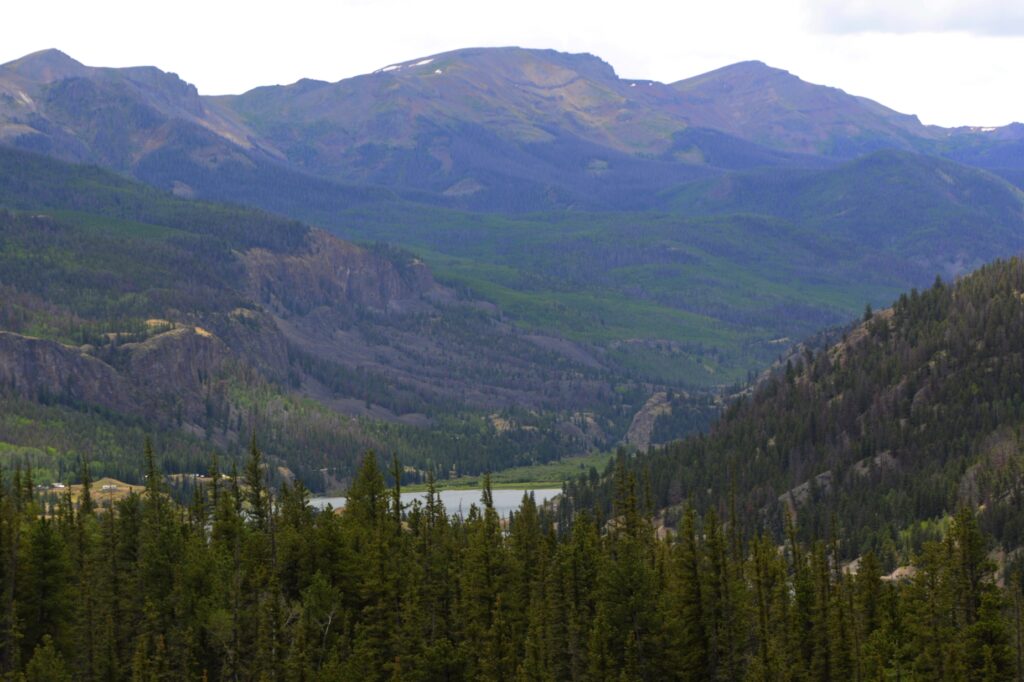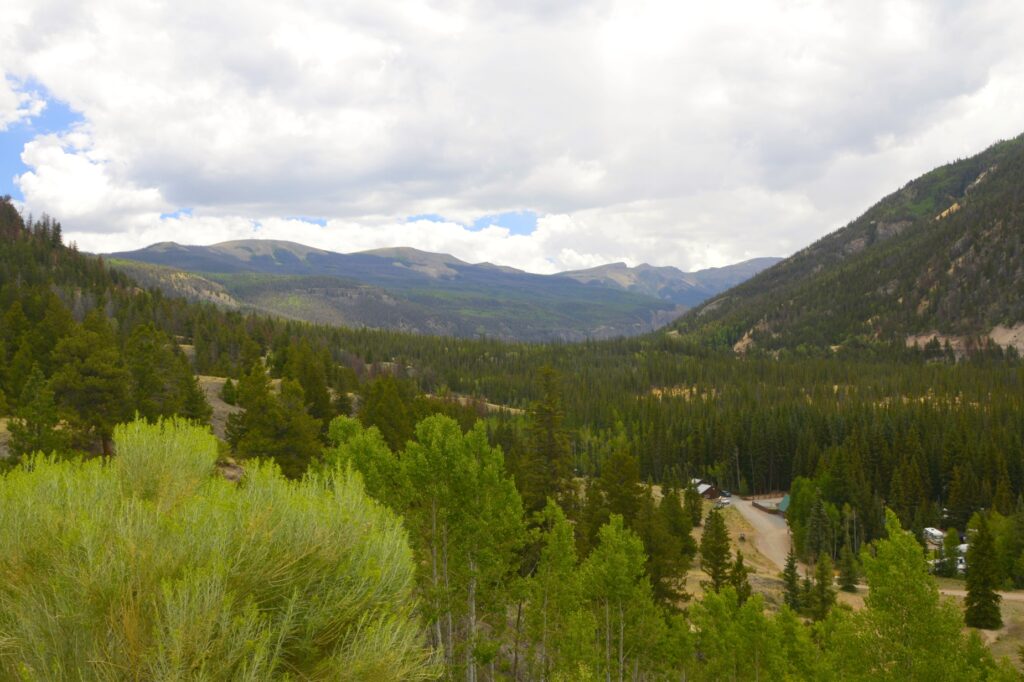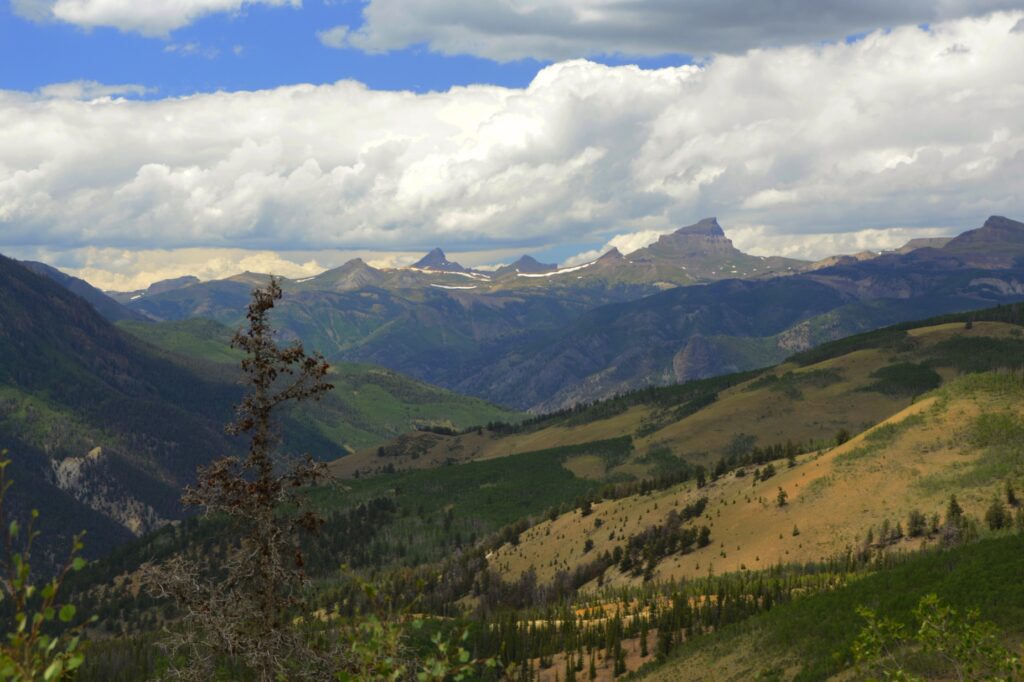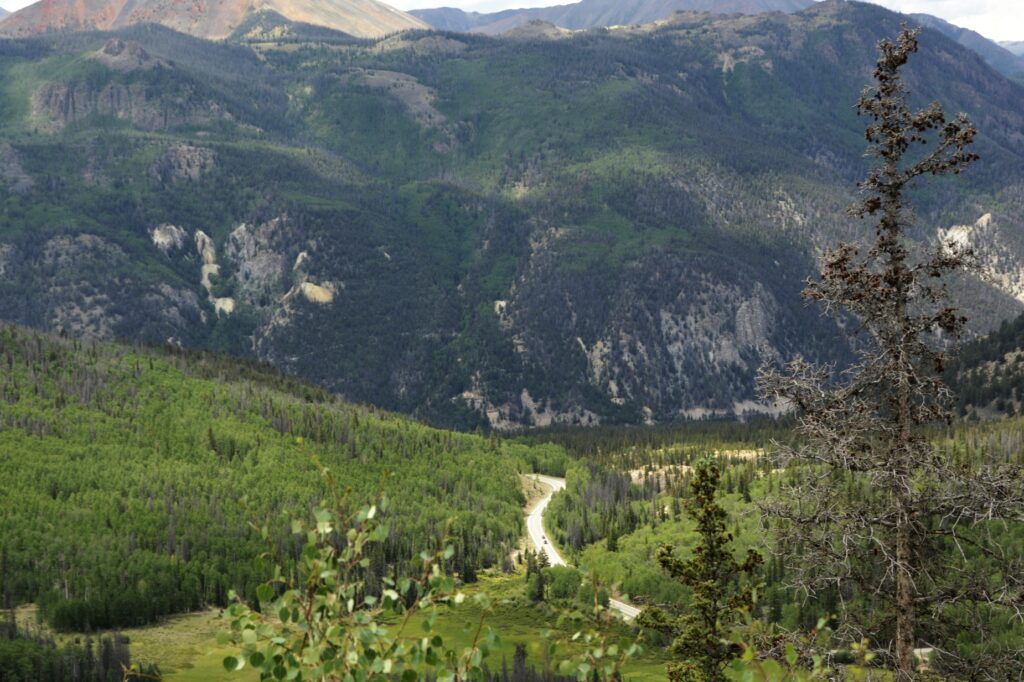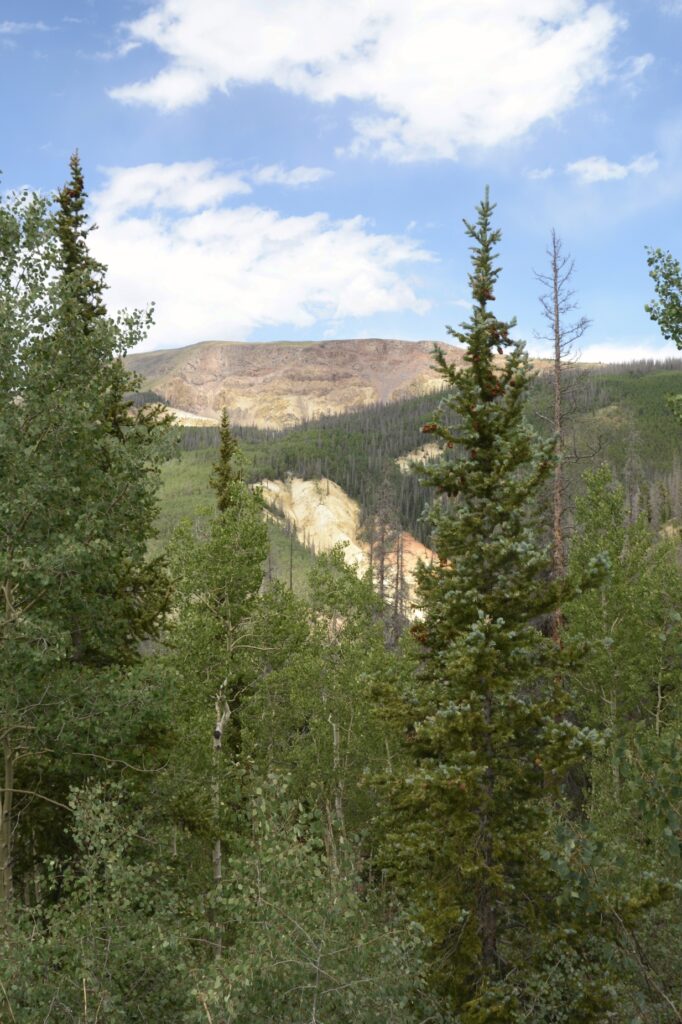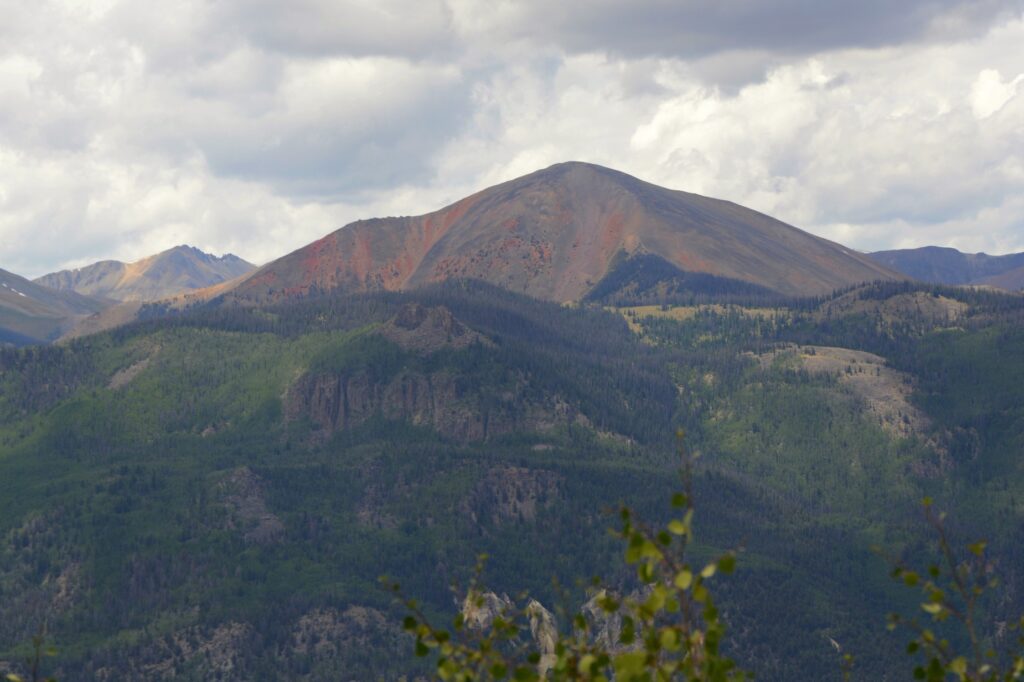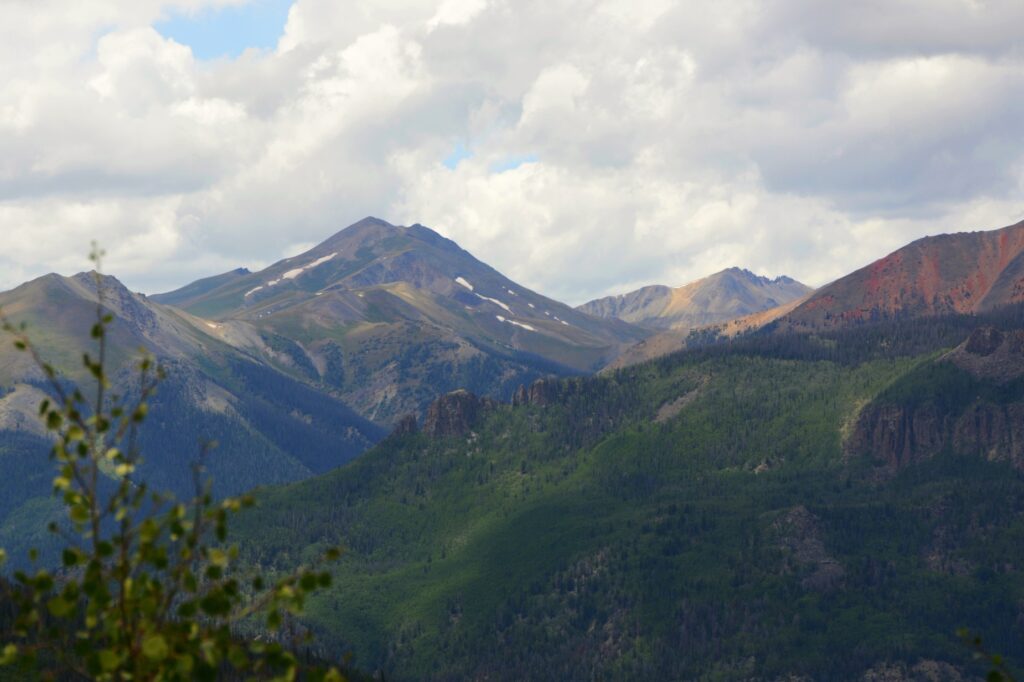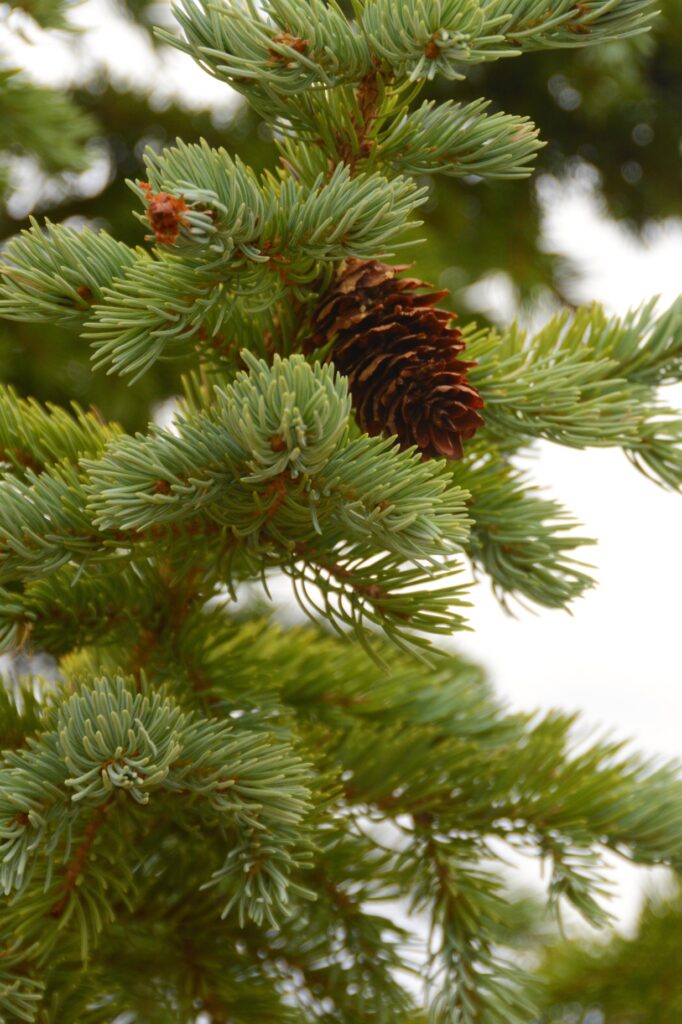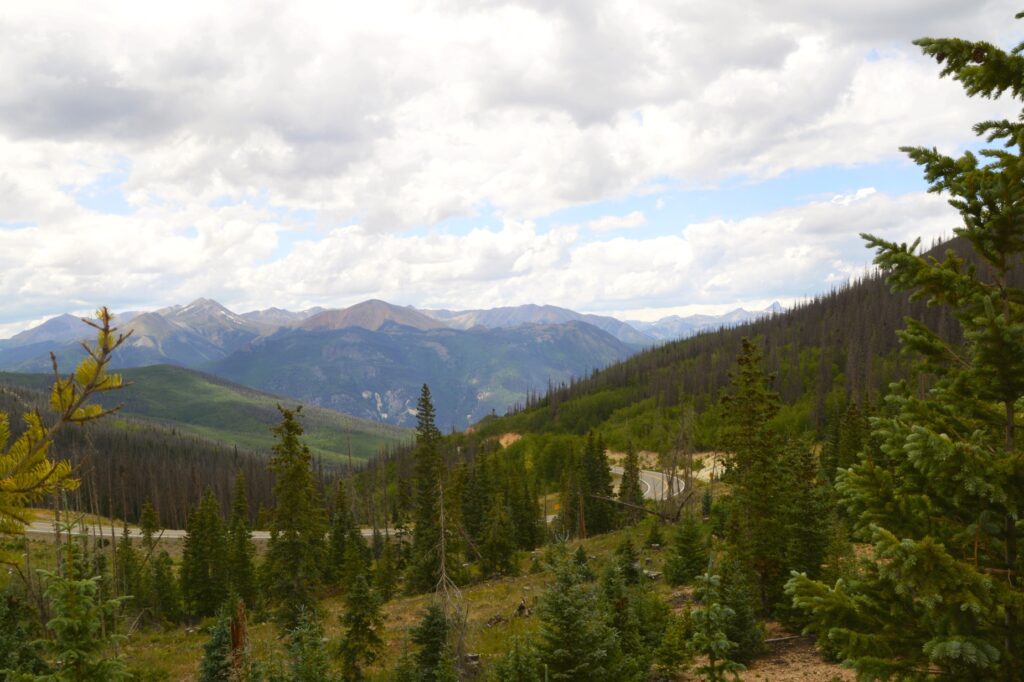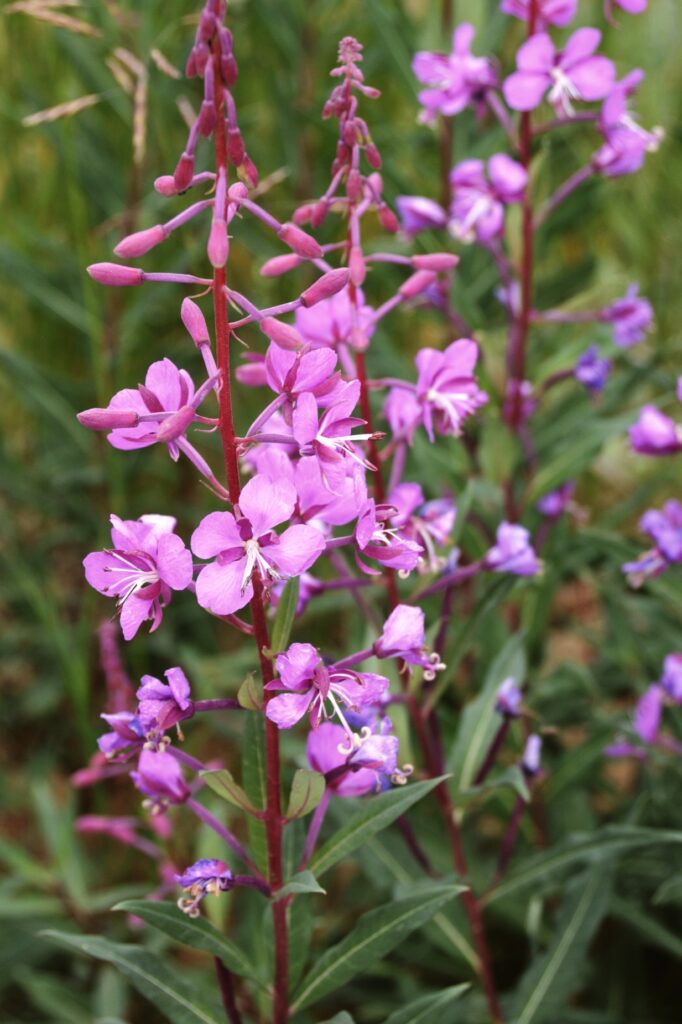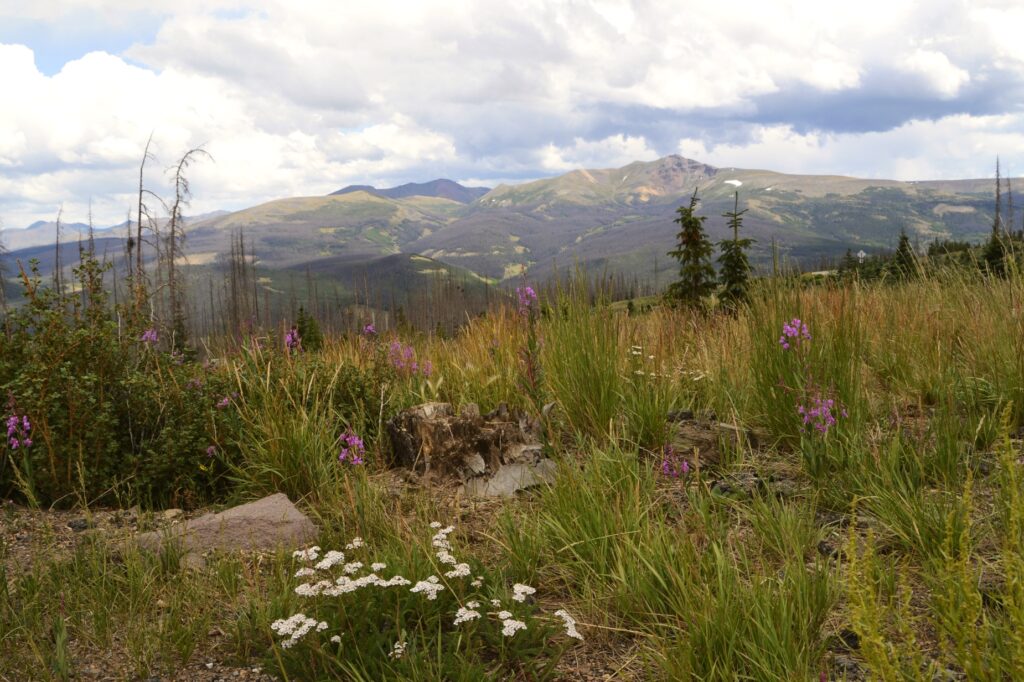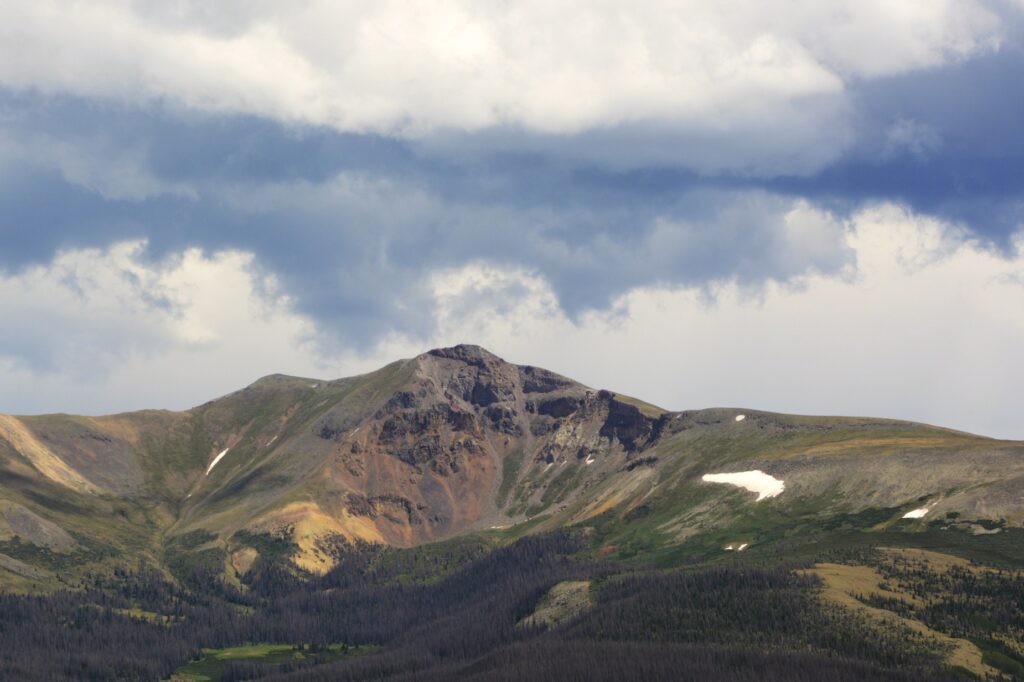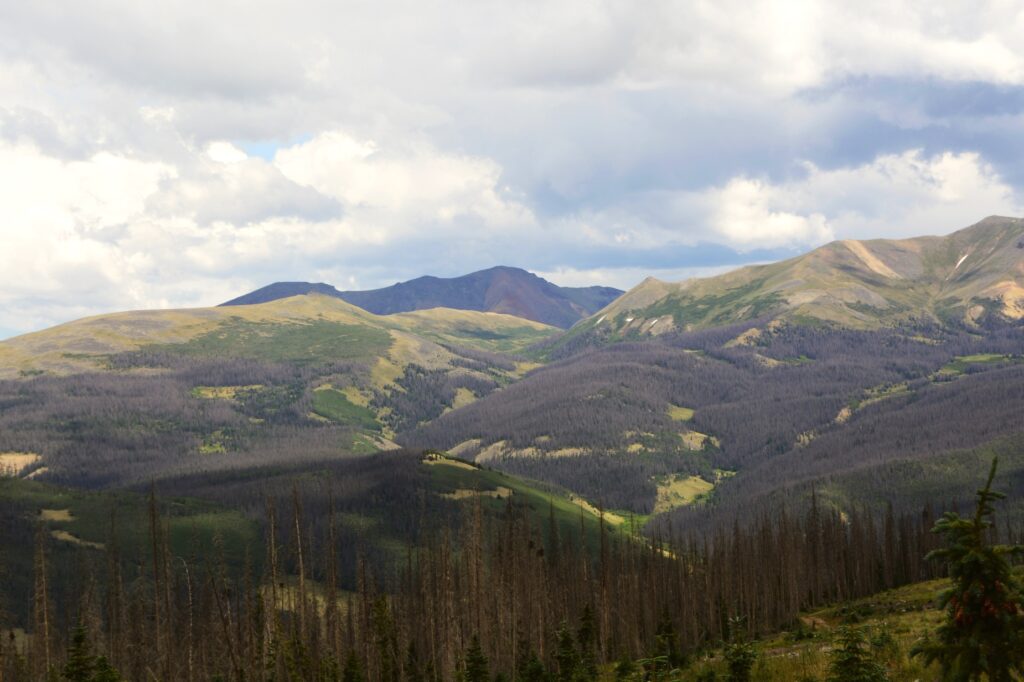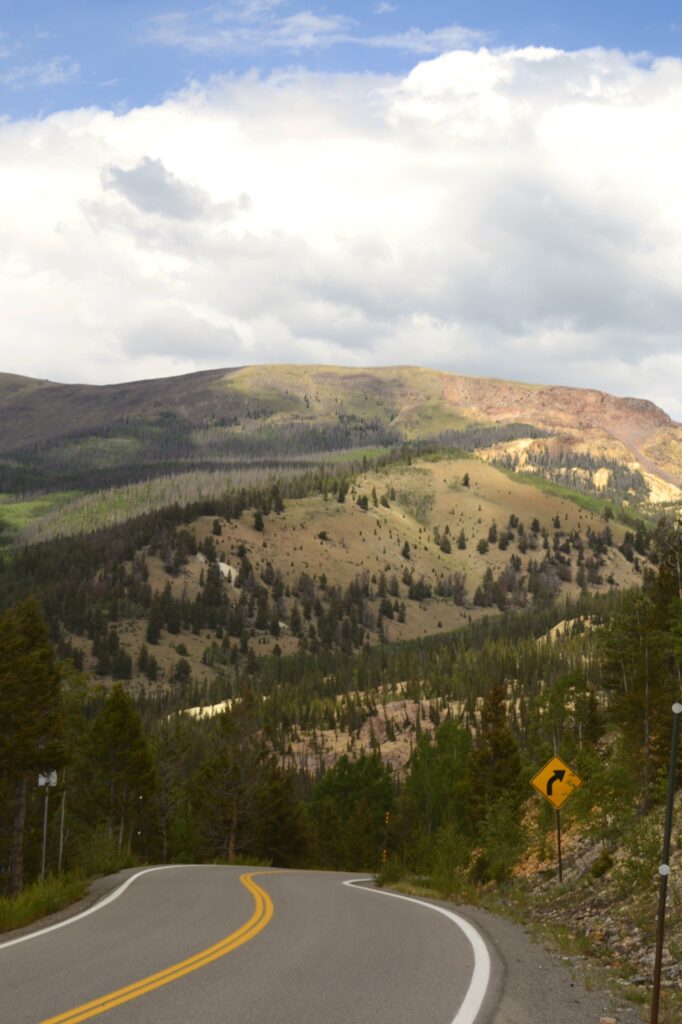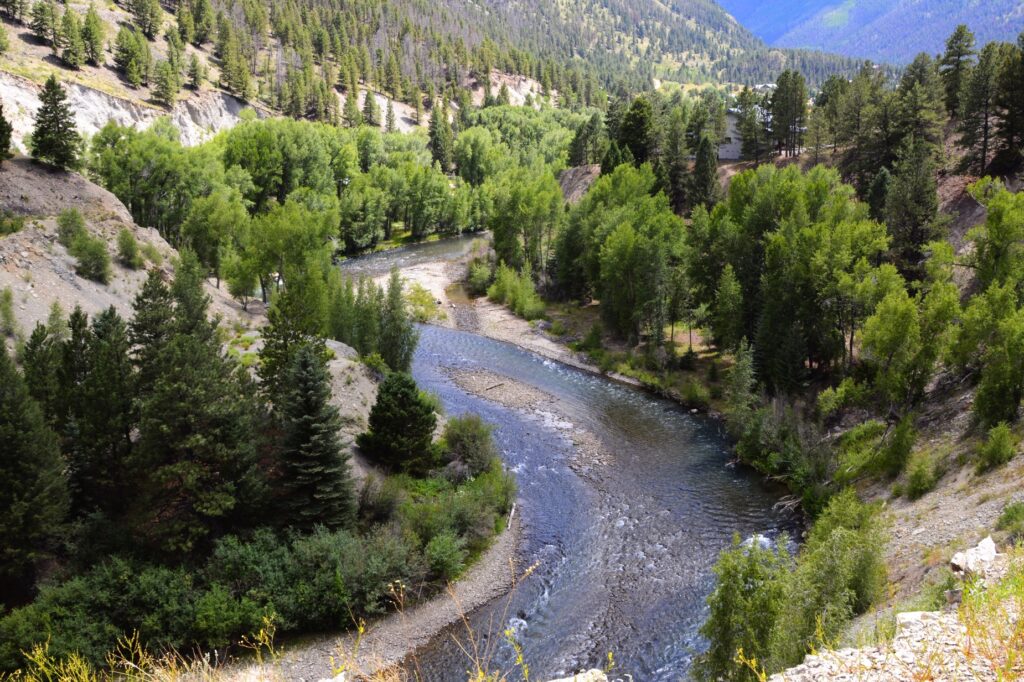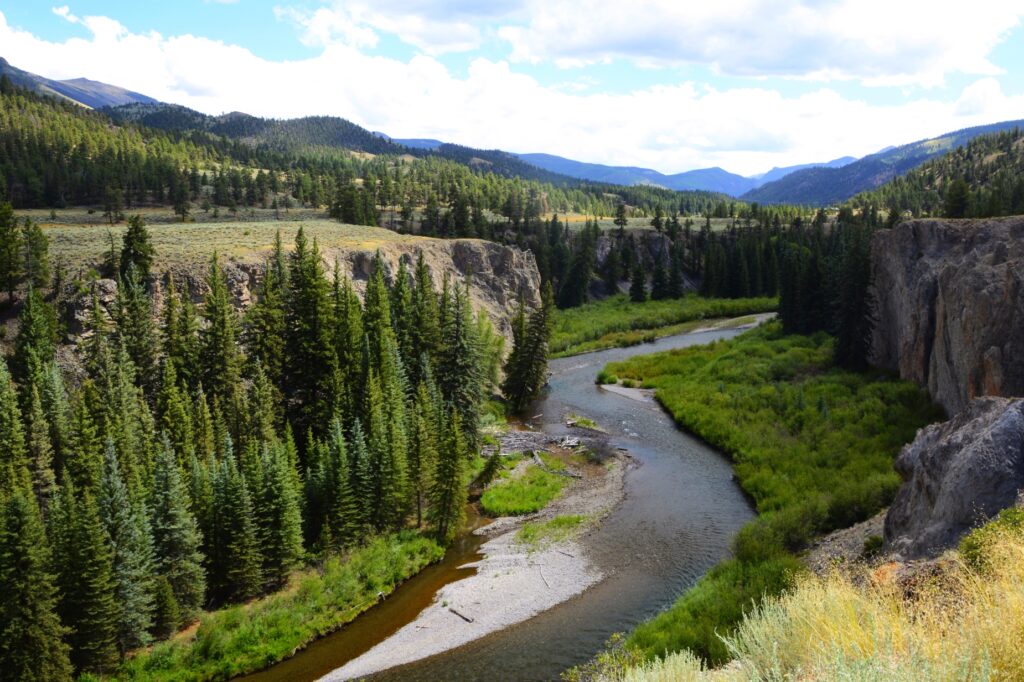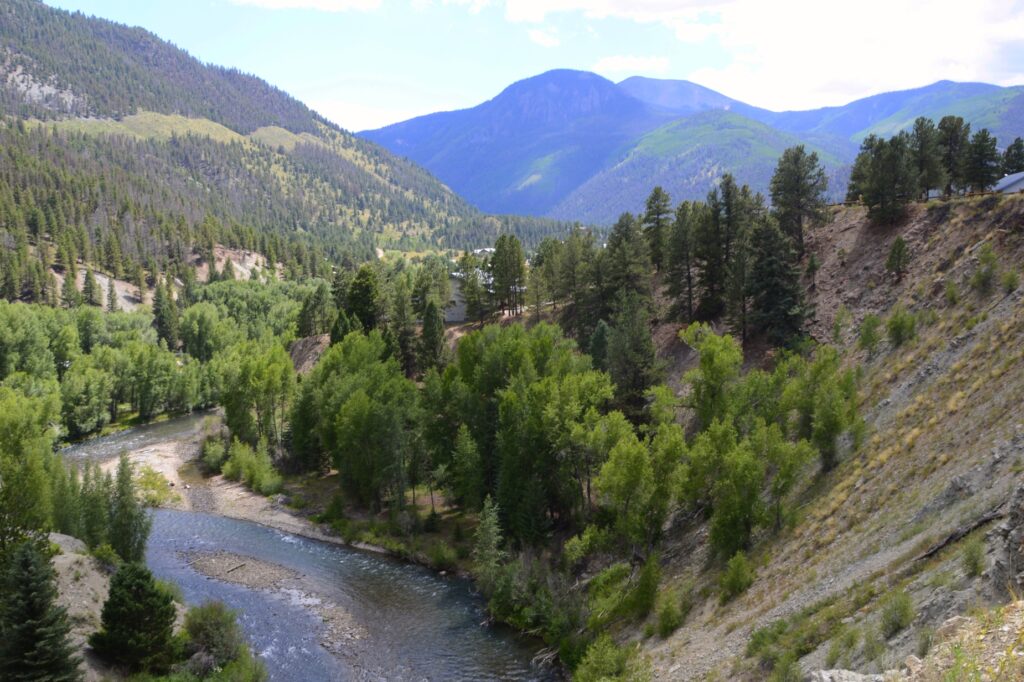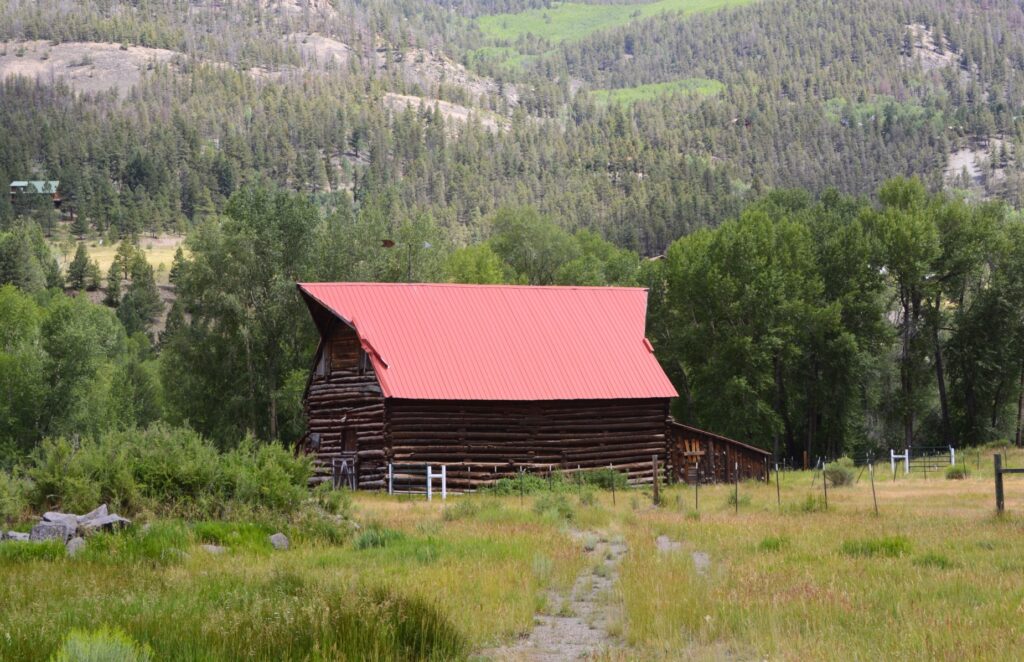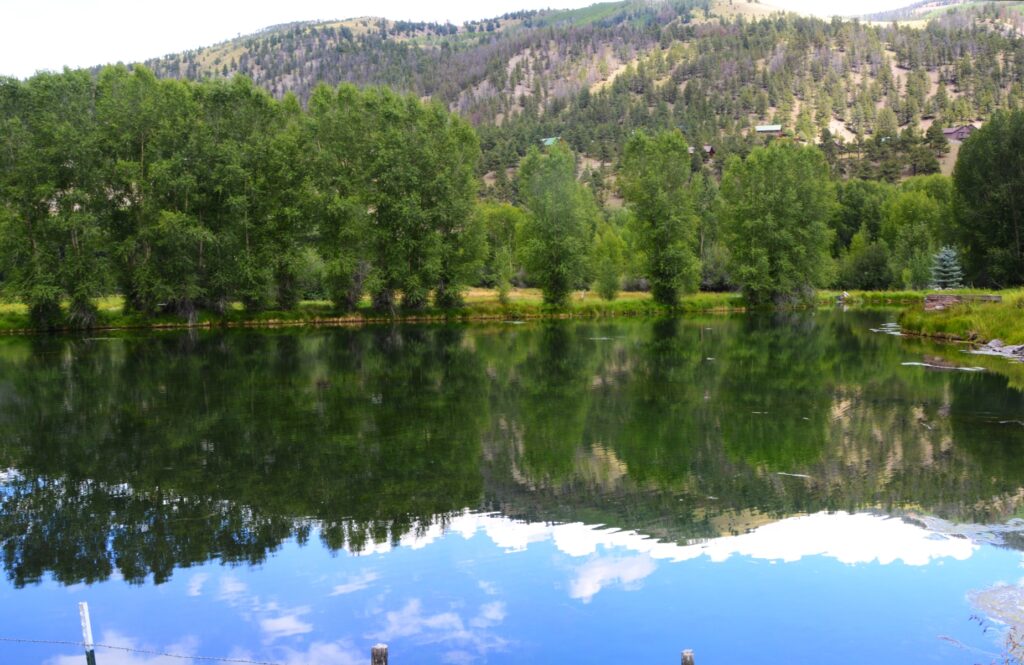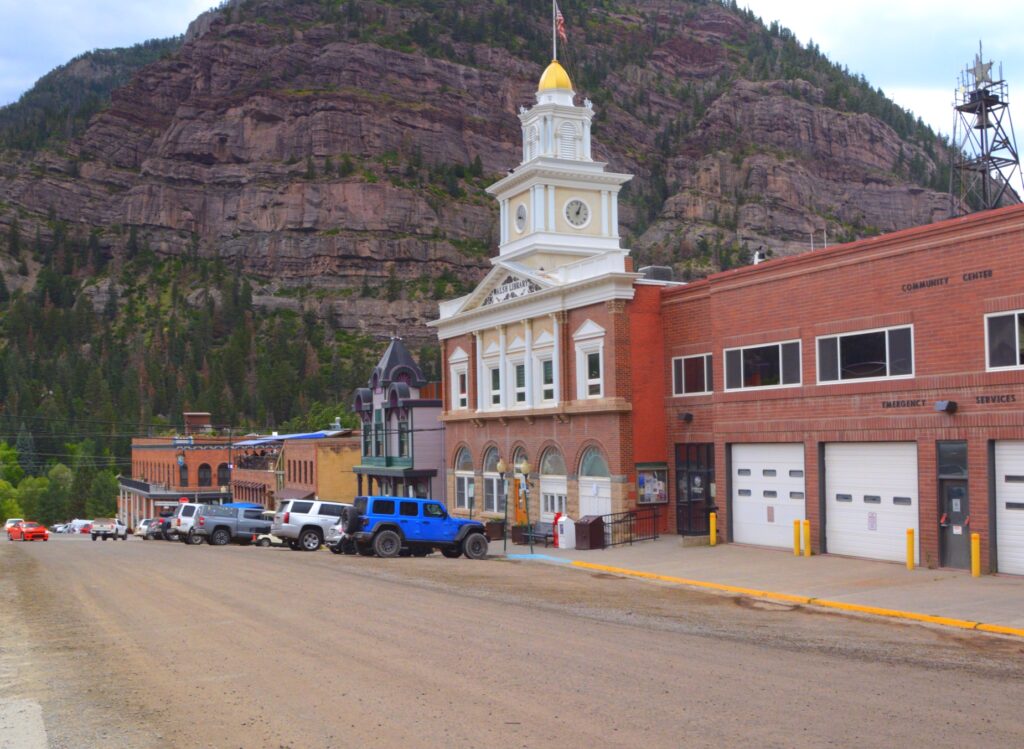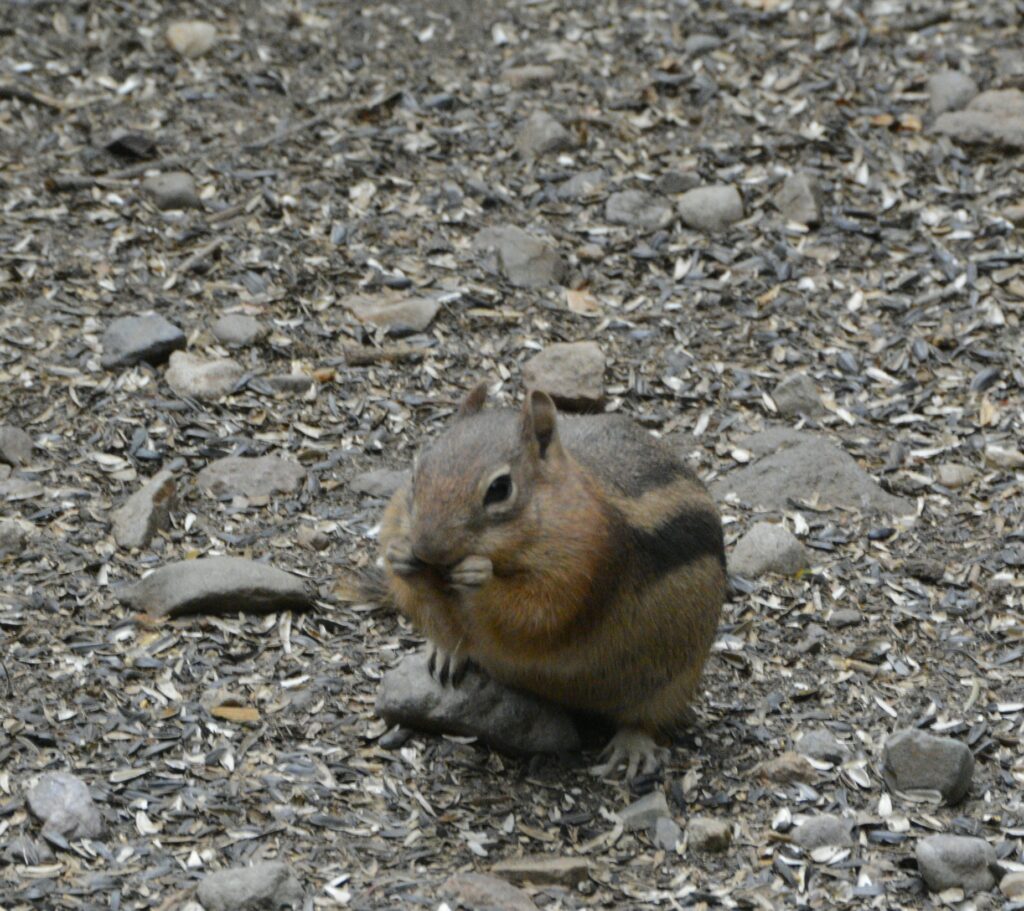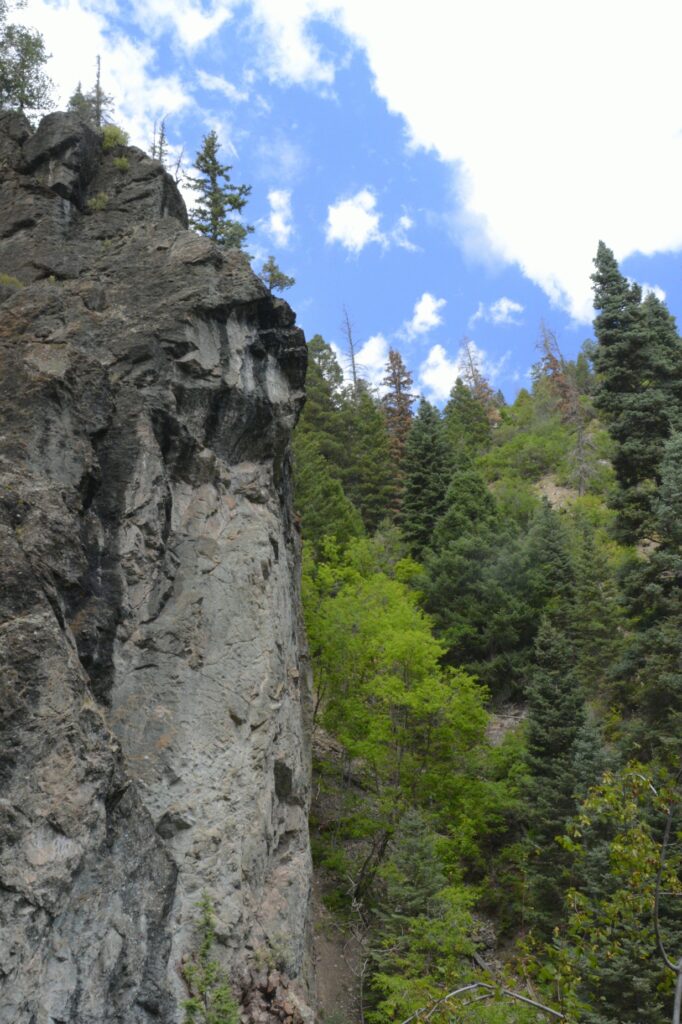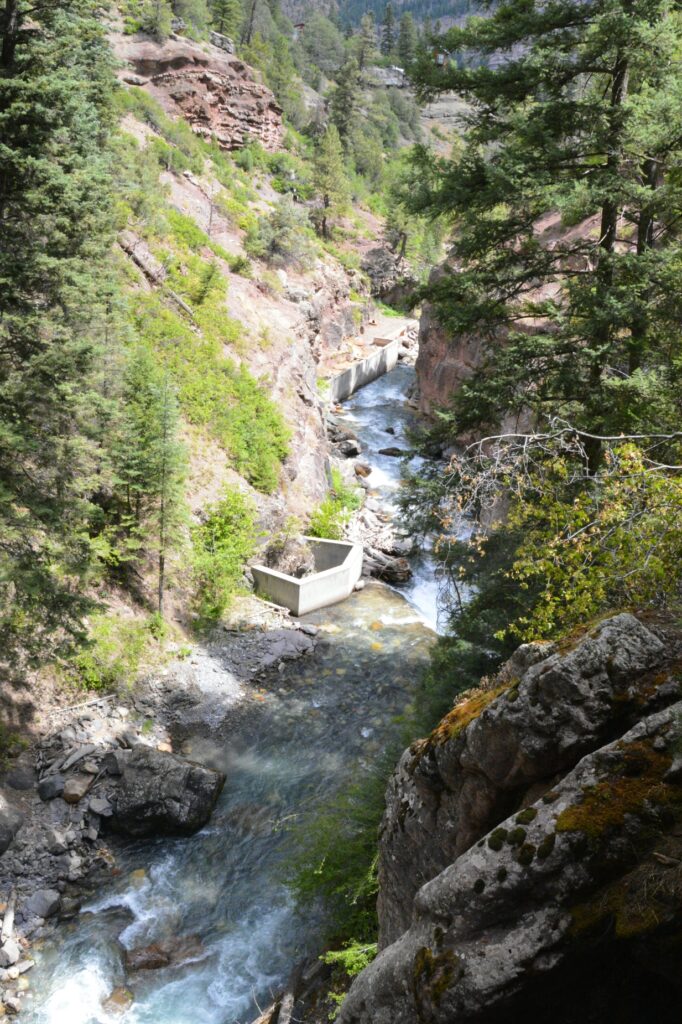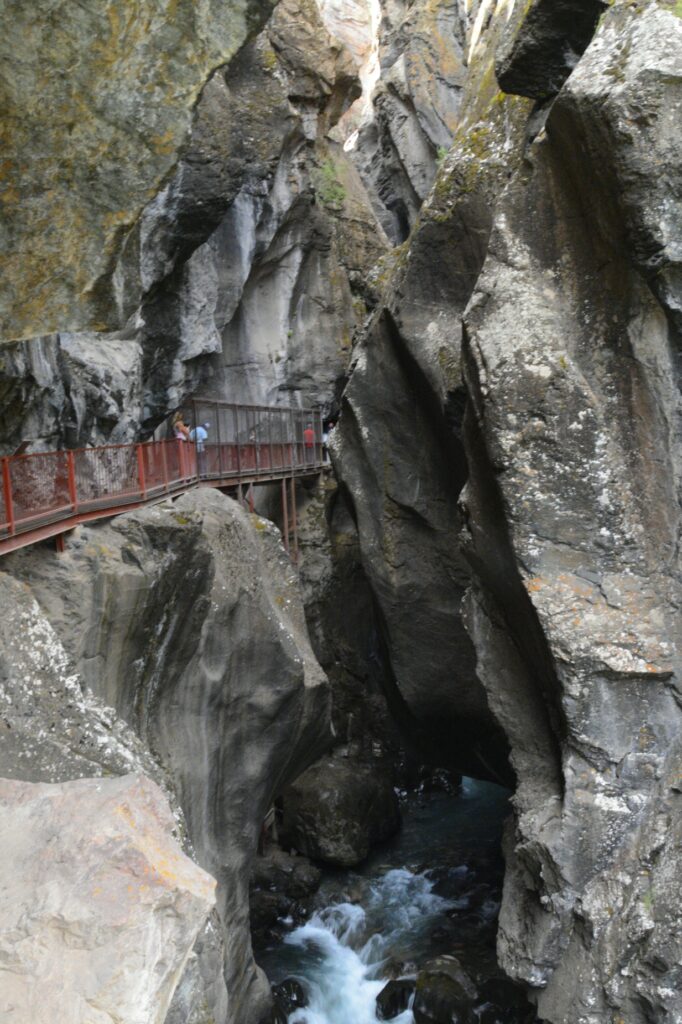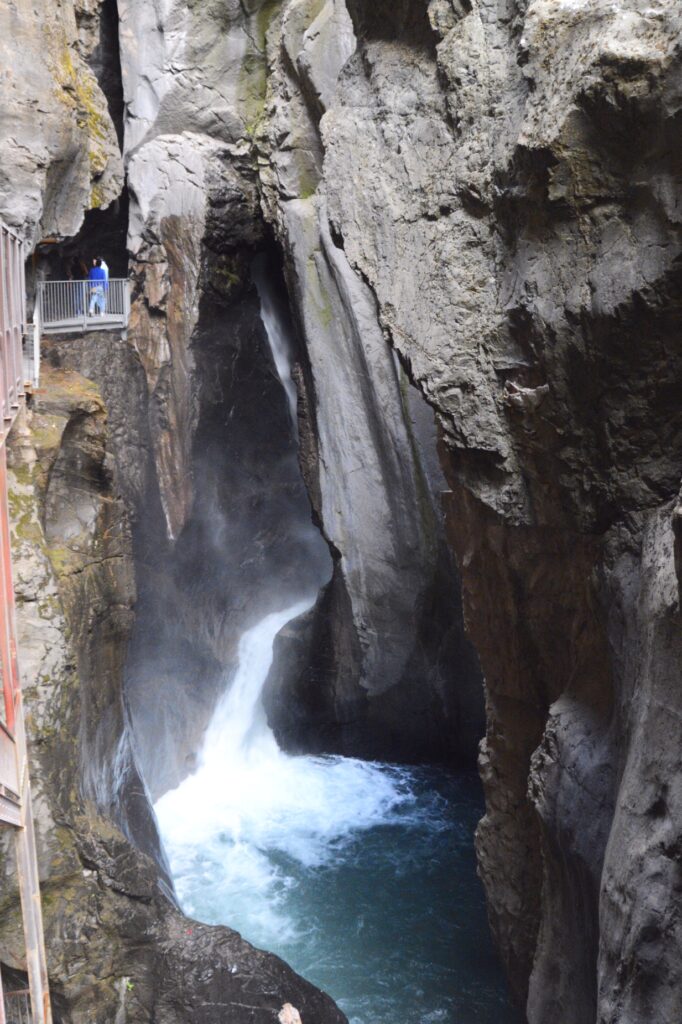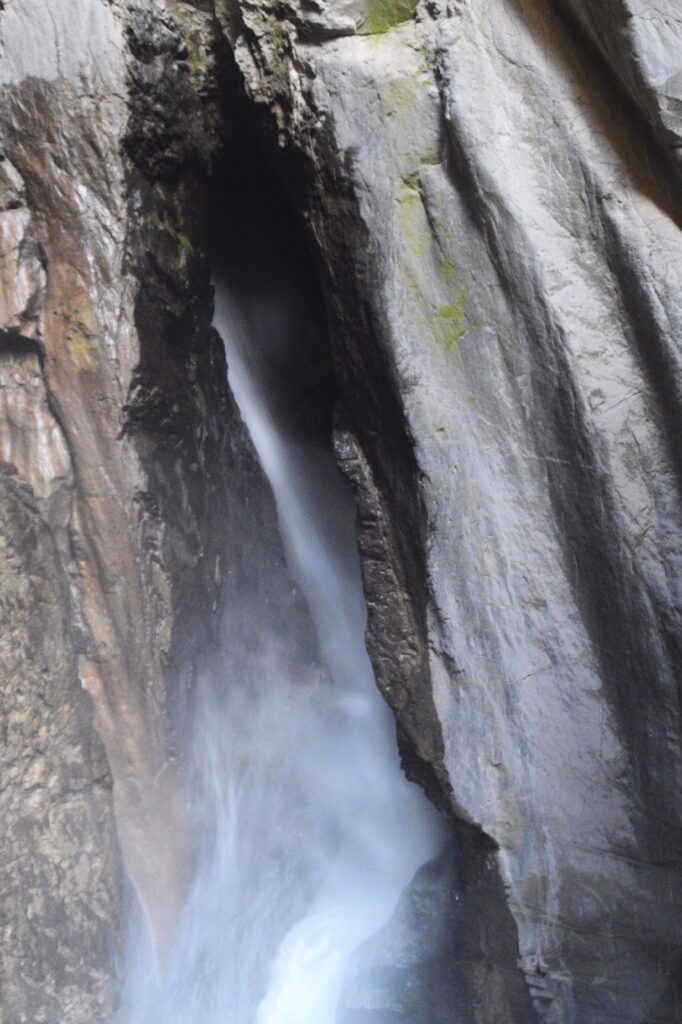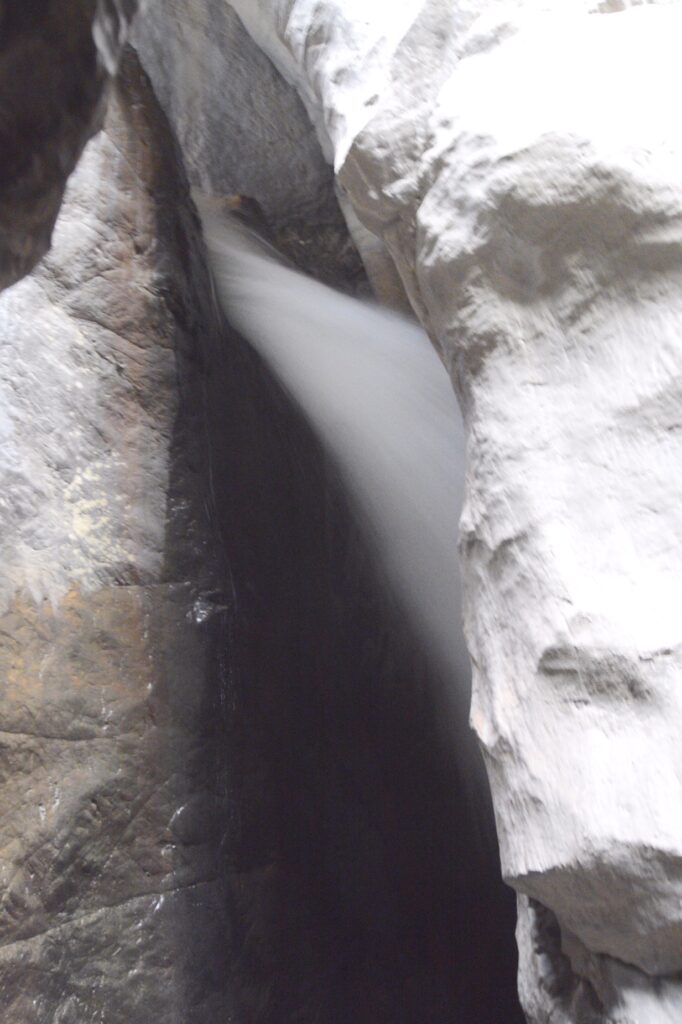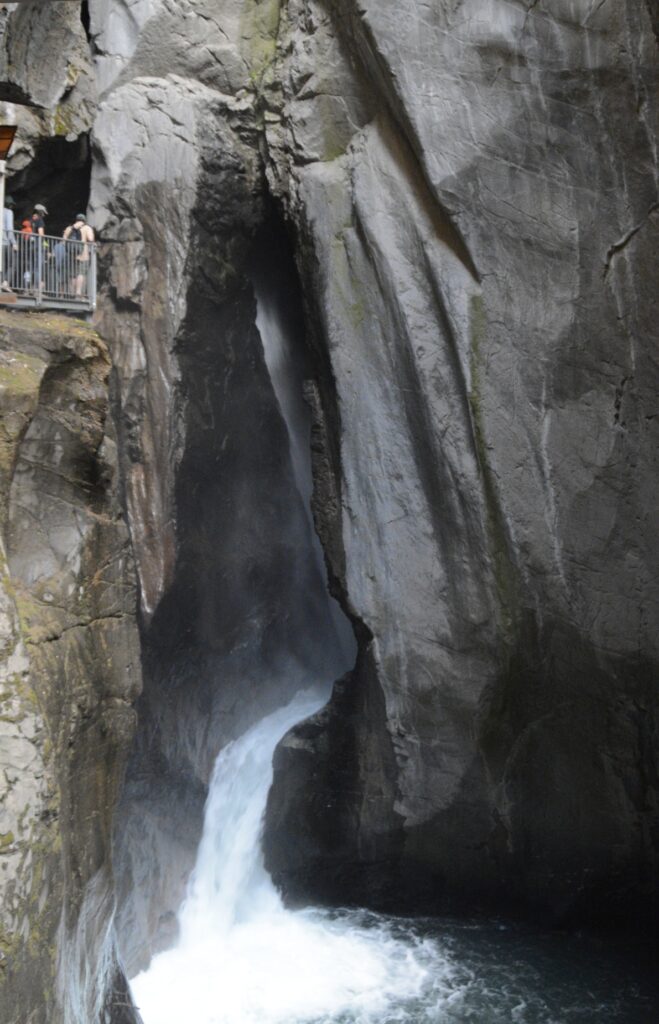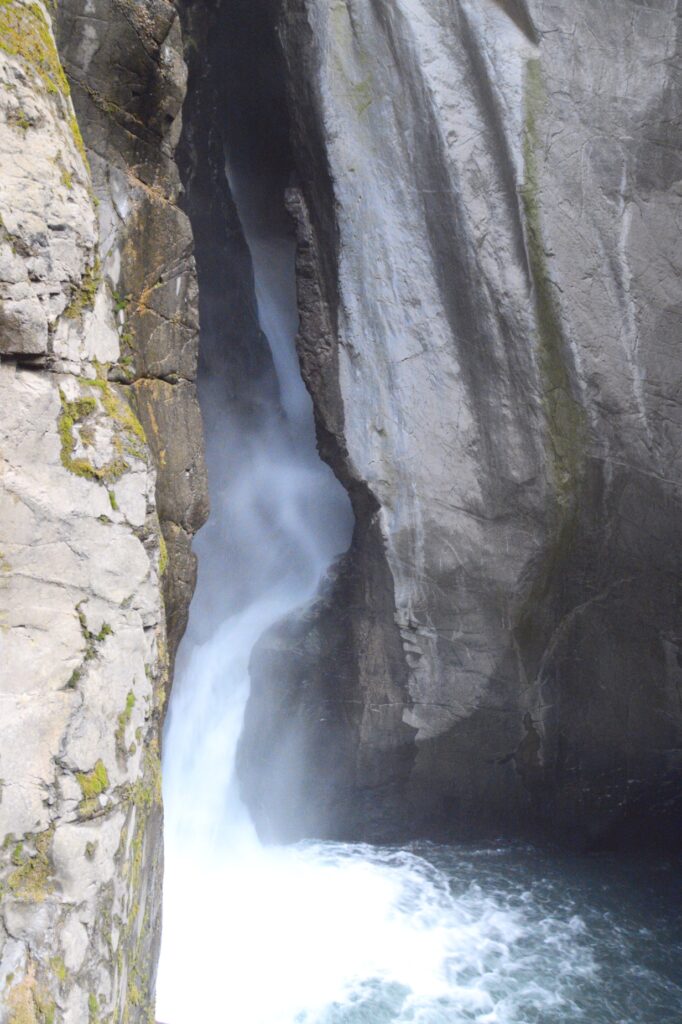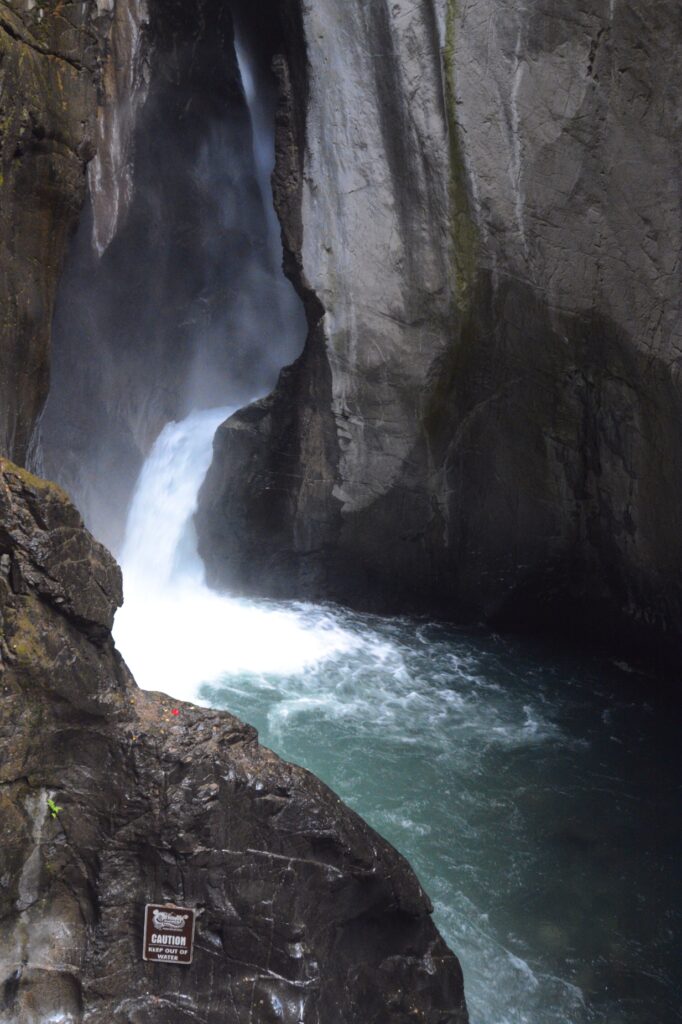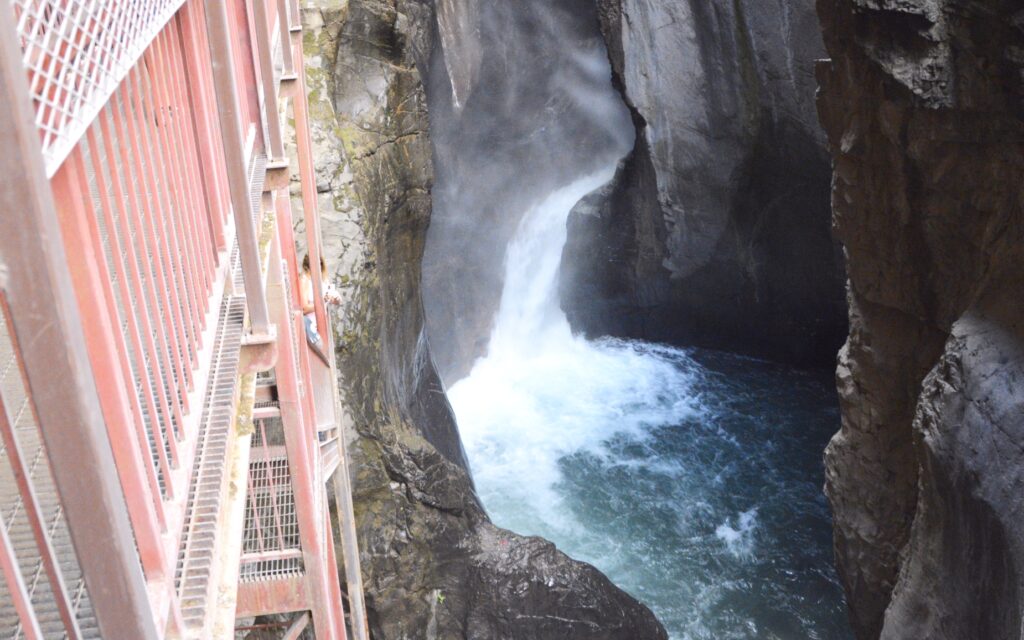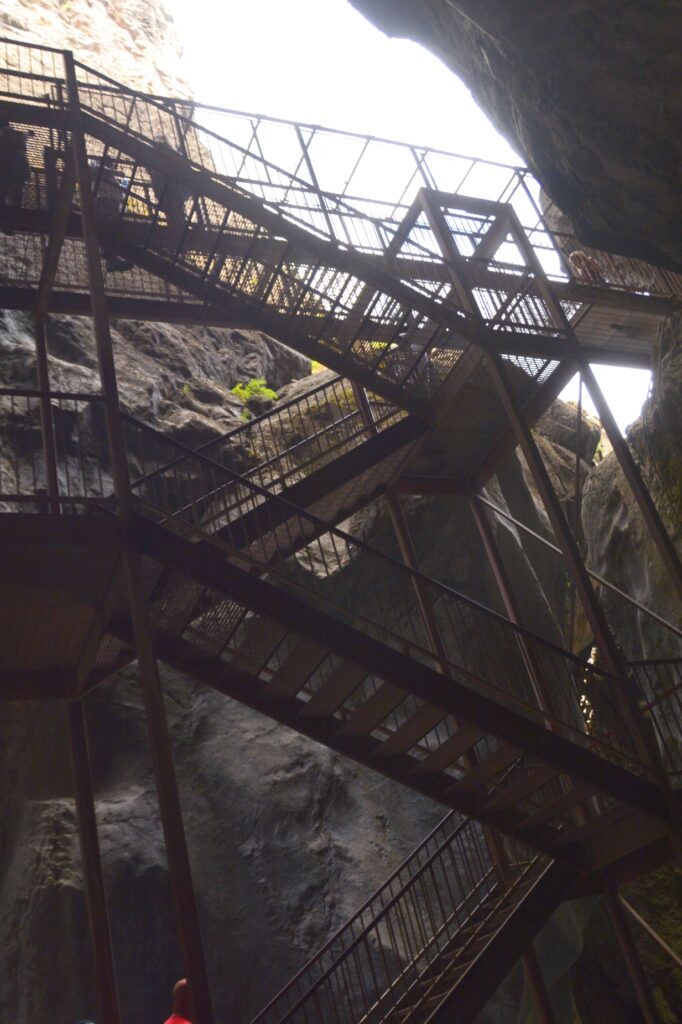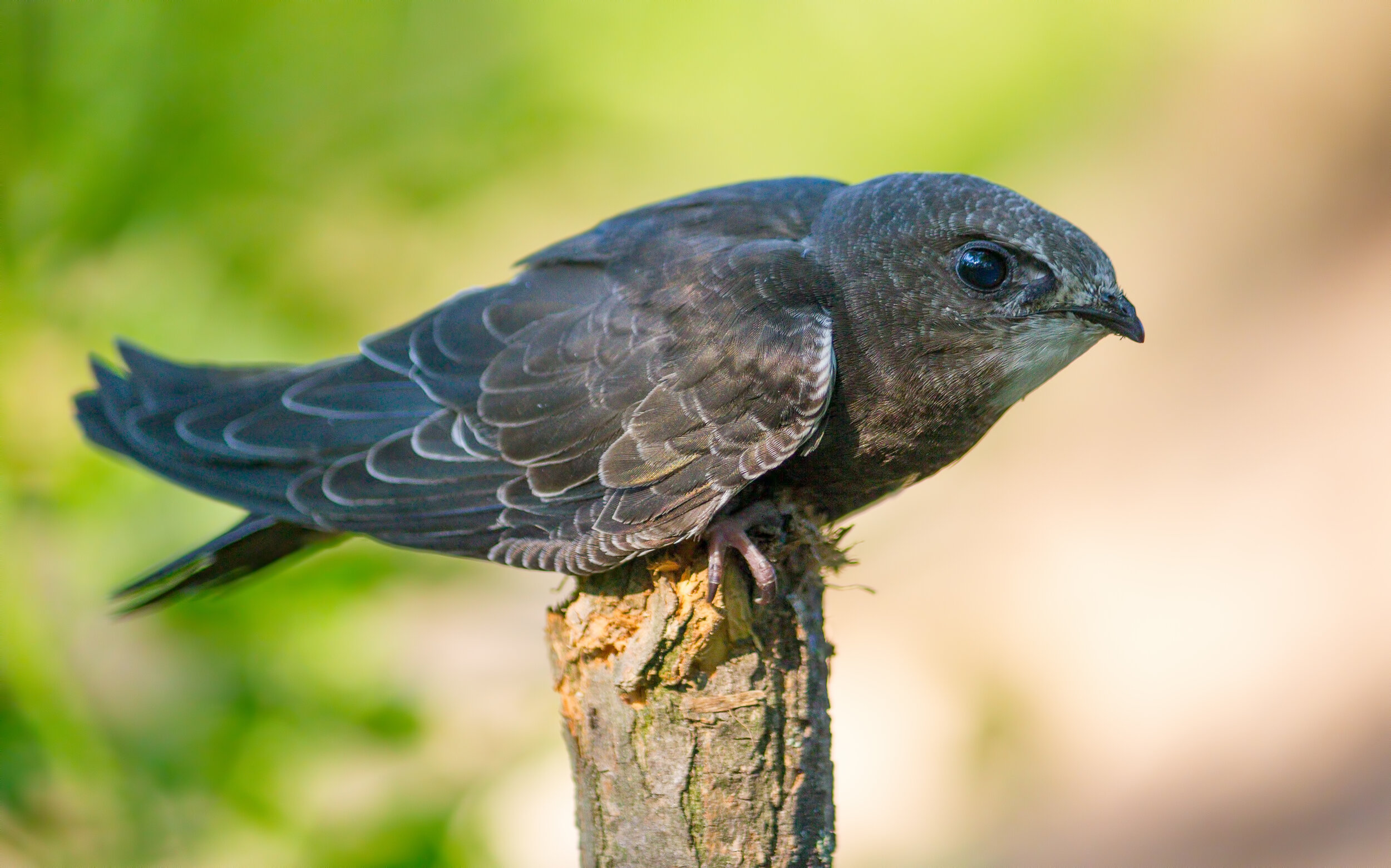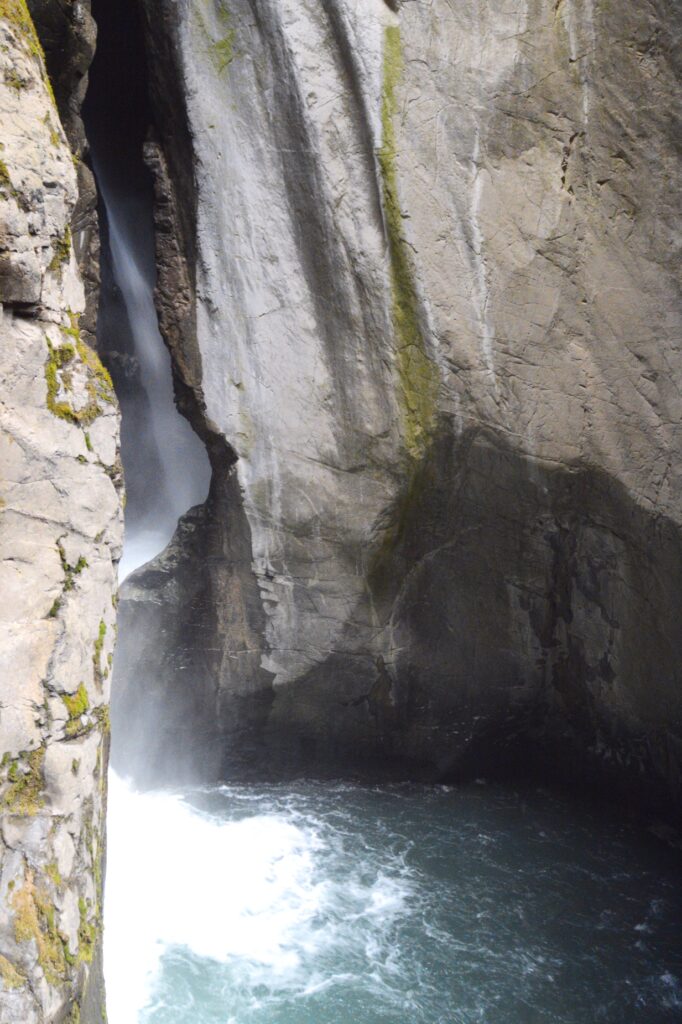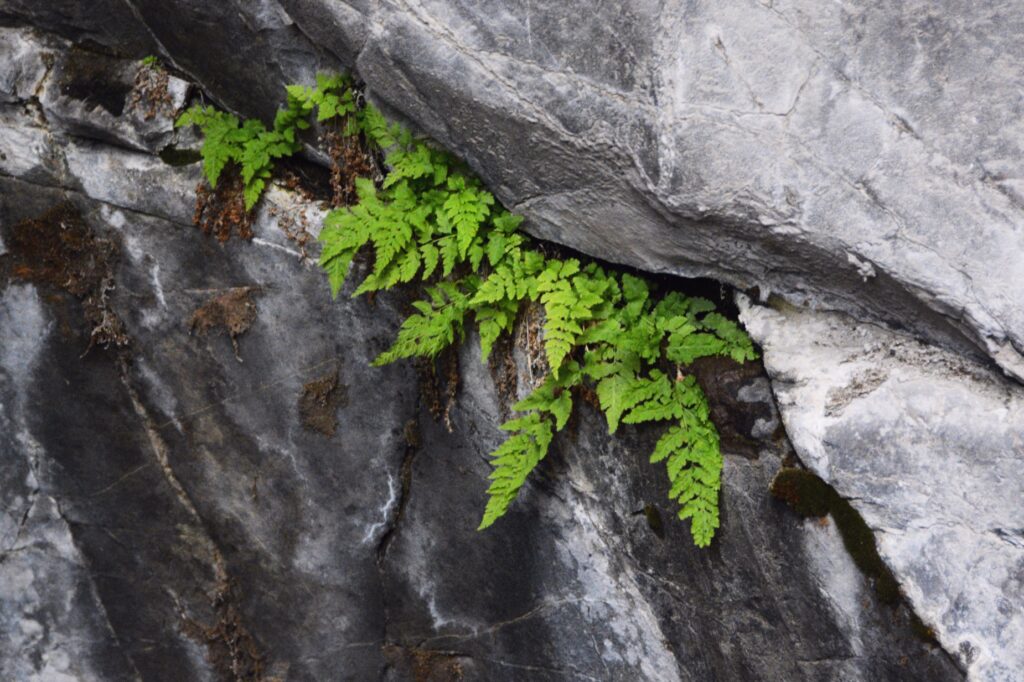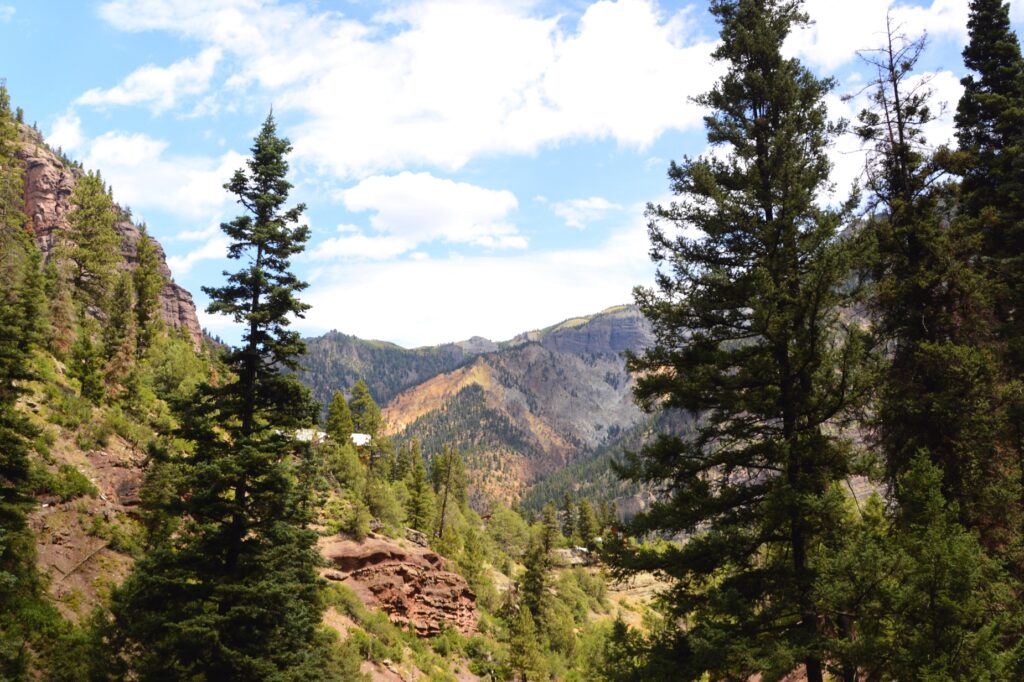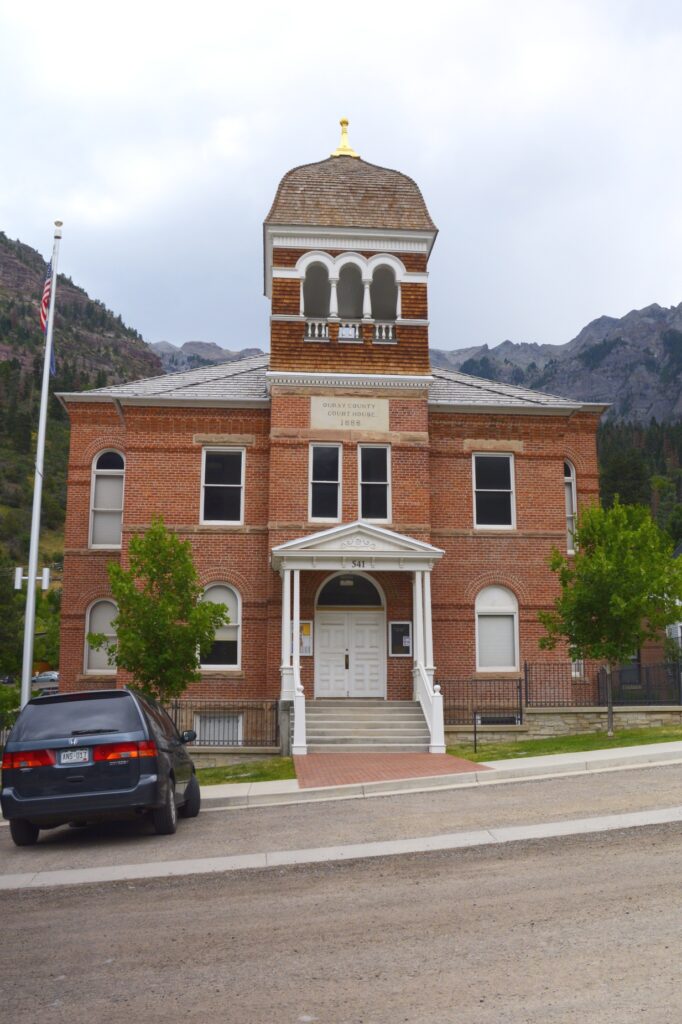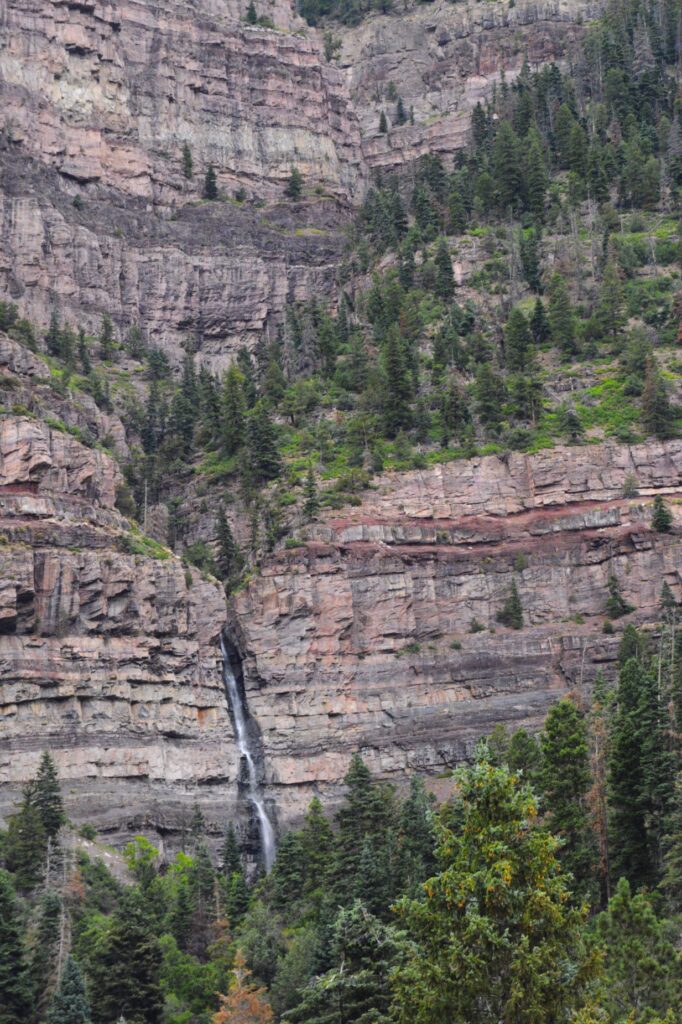The historic town of Telluride in the San Juan Mountains of southwest Colorado could easily have become a ghost town after the mining companies closed down in 1978. Instead, it transformed into a winter ski and summer recreational resort town.
At an elevation of 8,750 feet, it is a popular place to escape the heat of summer. It was a three hour drive for us to this little town. Along the way, we saw some beautiful scenery.
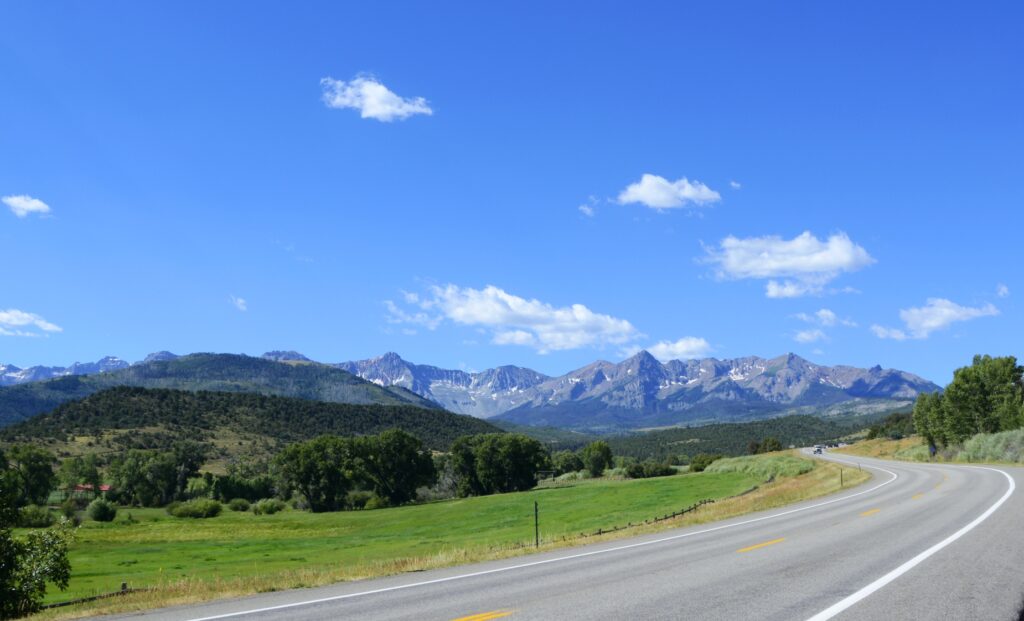
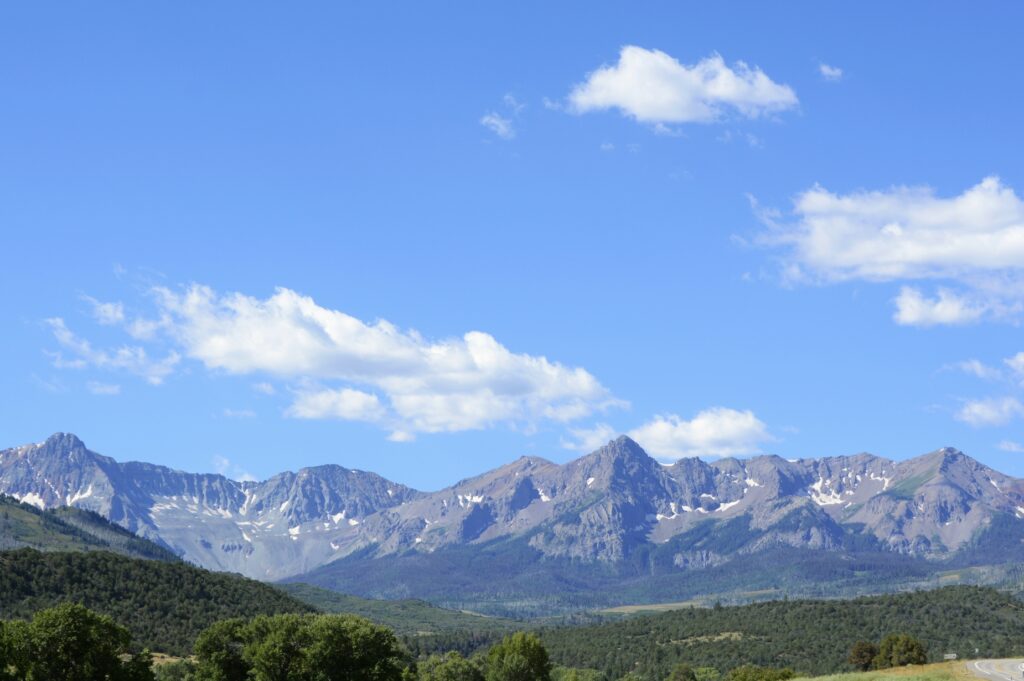
Having visited on the weekend, we had trouble finding parking. We found a spot on a side street and walked a short distance to the Visitors’ Center. There we found information about a free parking lot at the edge of town, and a shuttle bus that would take us where we wanted to go.
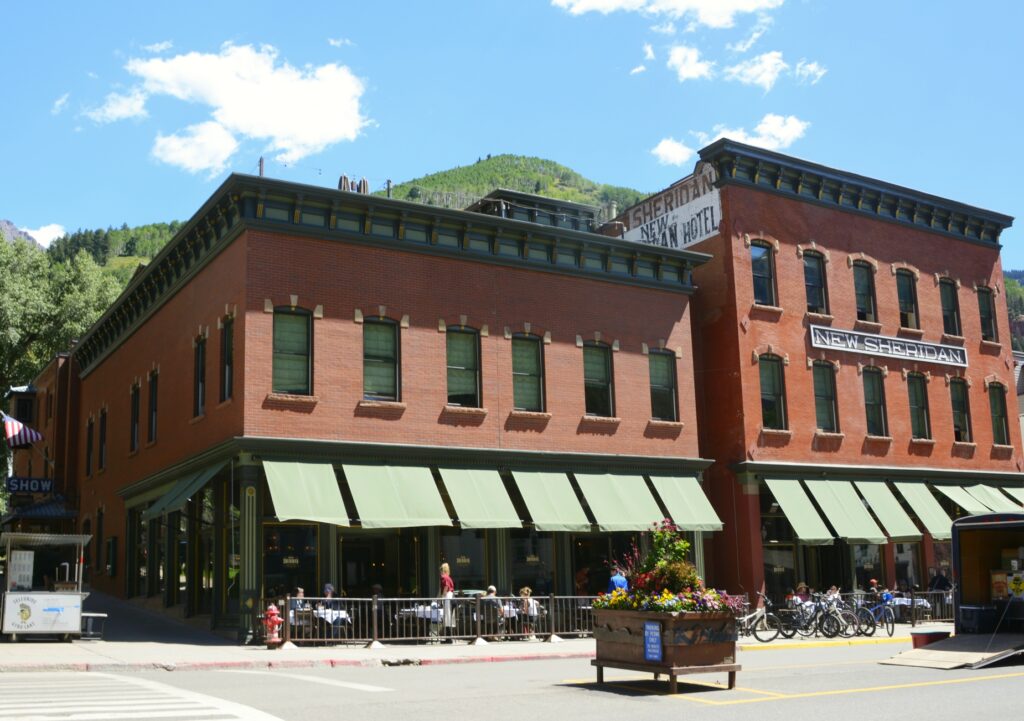
Telluride is both on the U.S. National Register of Historic Places and a U.S. Historic Landmark District, so I was able to get my Passport book stamped at the Visitors’ Center. There’s a self-guided walking tour of historic buildings, but Ray’s knee was hurting, so we chose not to do that. The New Sheridan Hotel is one of the historic buildings on the list.
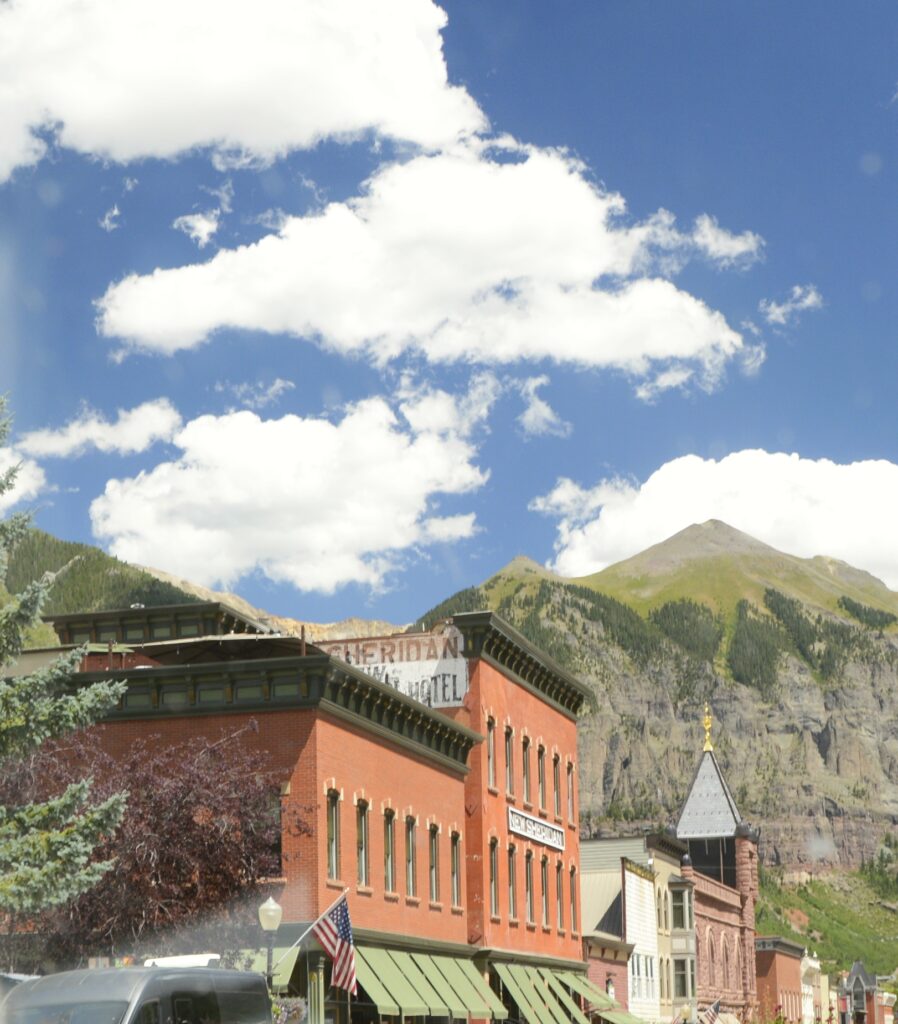
Before we moved from our parking spot, we spotted a cement wall in front of a little chapel nearby that made a perfect place to eat our picnic lunch.
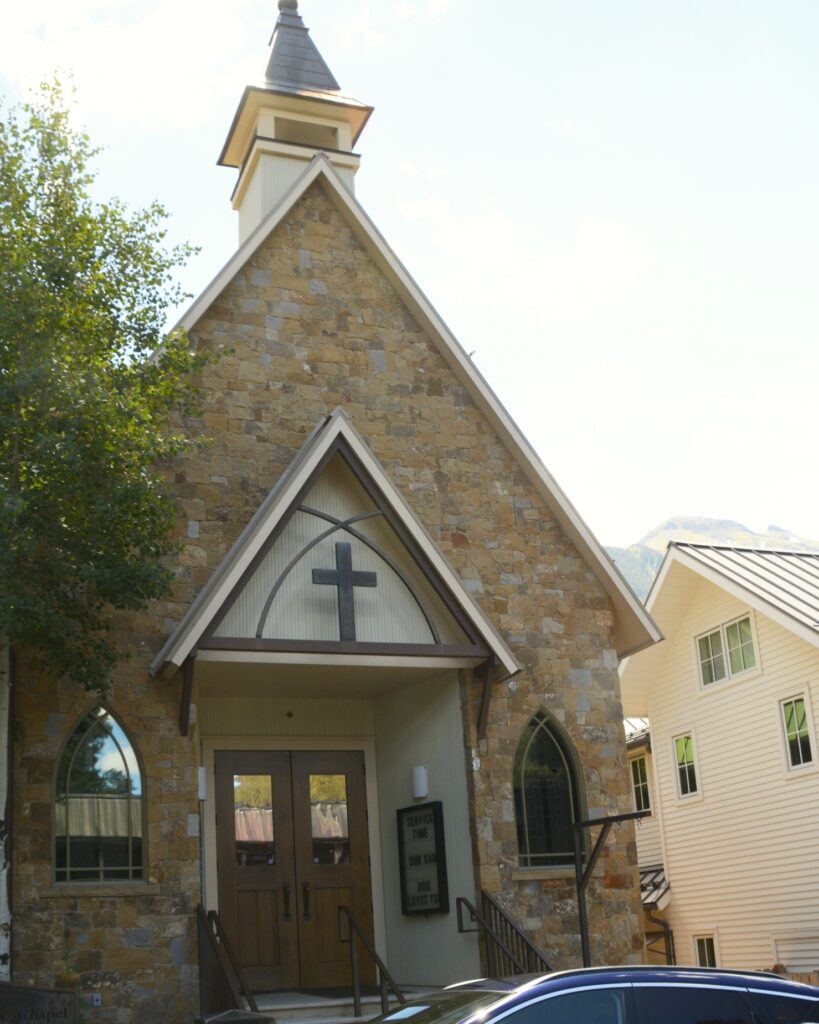
We found the free parking lot and hopped on the shuttle bus to the Gondola Station. At the Gondola Station we boarded a gondola car and were soon headed up toward the summit of the mountain.
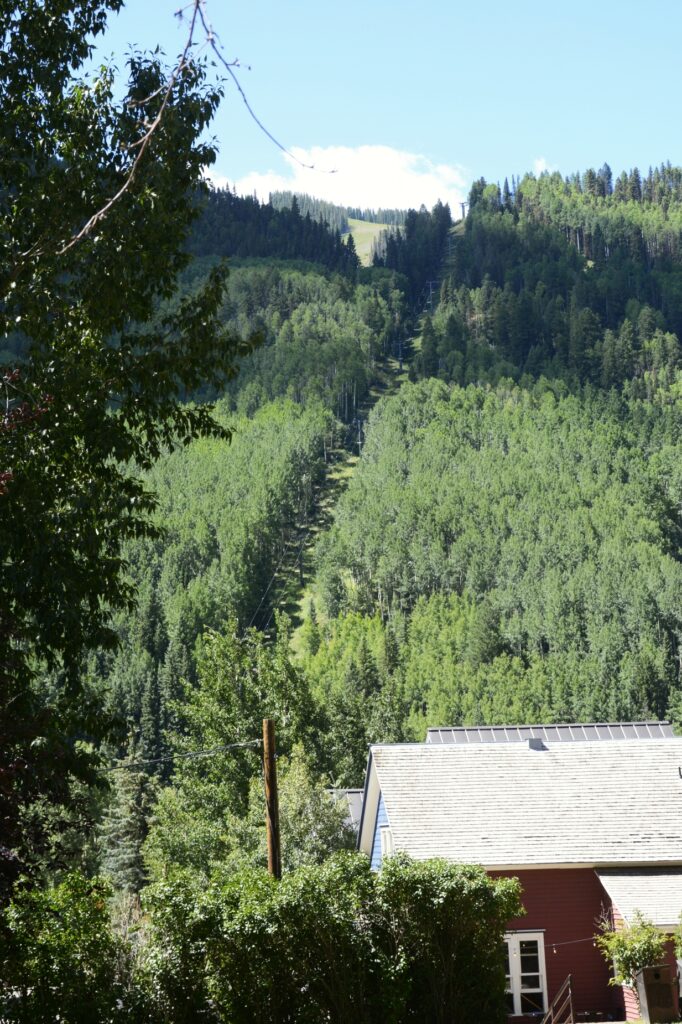
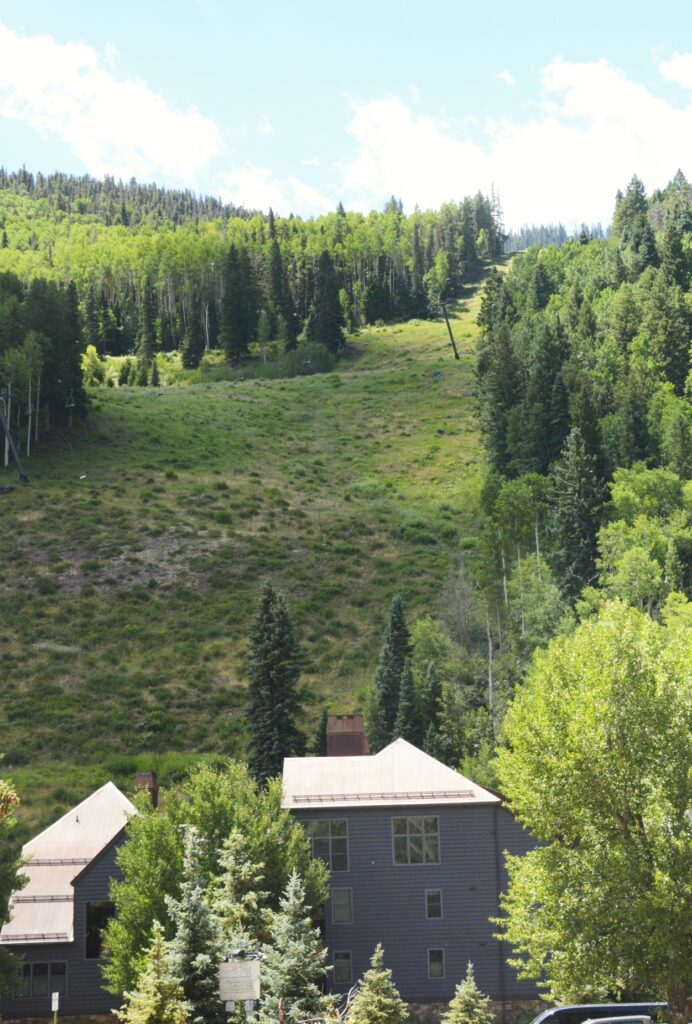
The free gondola ride lasts 13 minutes from the center of Telluride to the resort town of Mountain Village. It covers three miles of terrain. The gondola ride is the first and only free public transportation of its kind in the United States. It officially opened December 20, 1996, and it operates 6:30 a.m. to midnight year round.
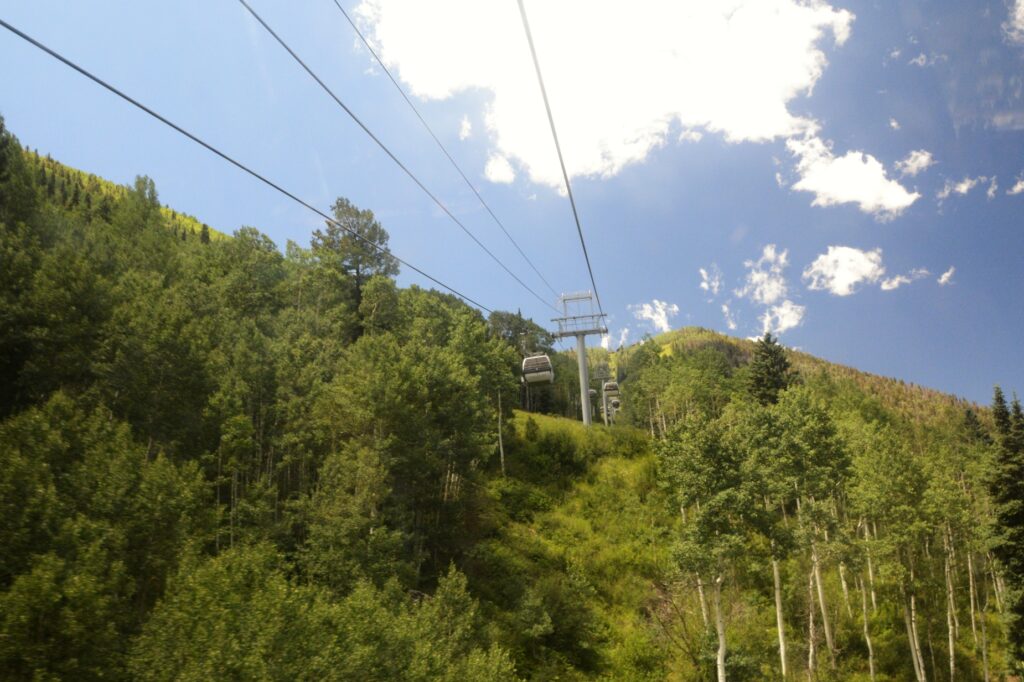
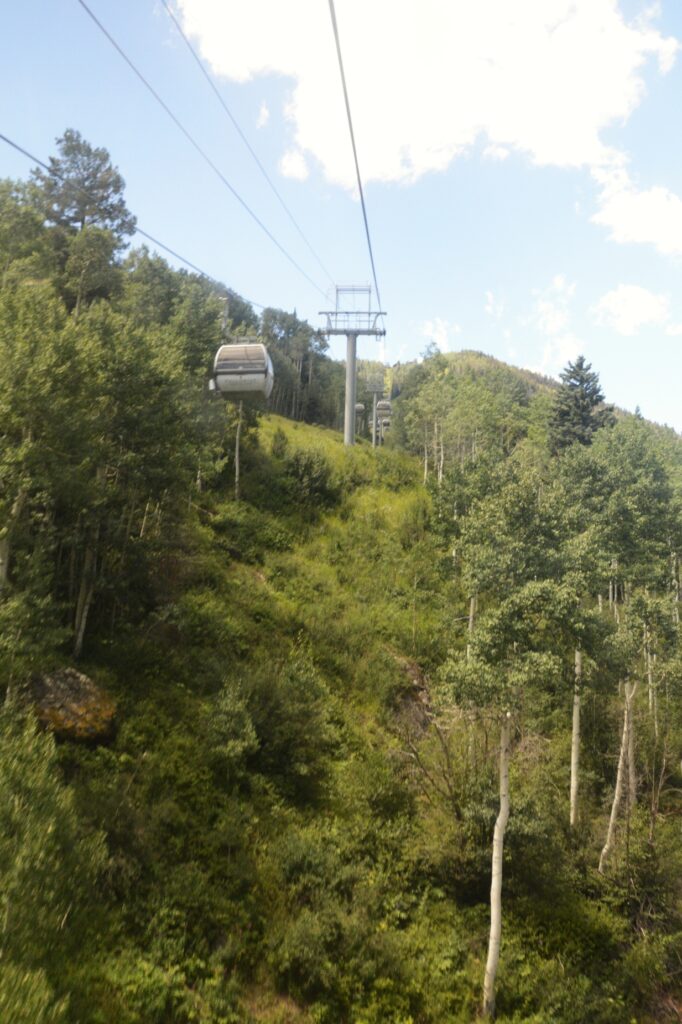
We got off at the San Sophia Station, (elevation 10, 540 feet) at the top of the mountain to view the scenery. The gondola continues down the other side to Mountain Village, but we wanted to look around the top of the mountain first.
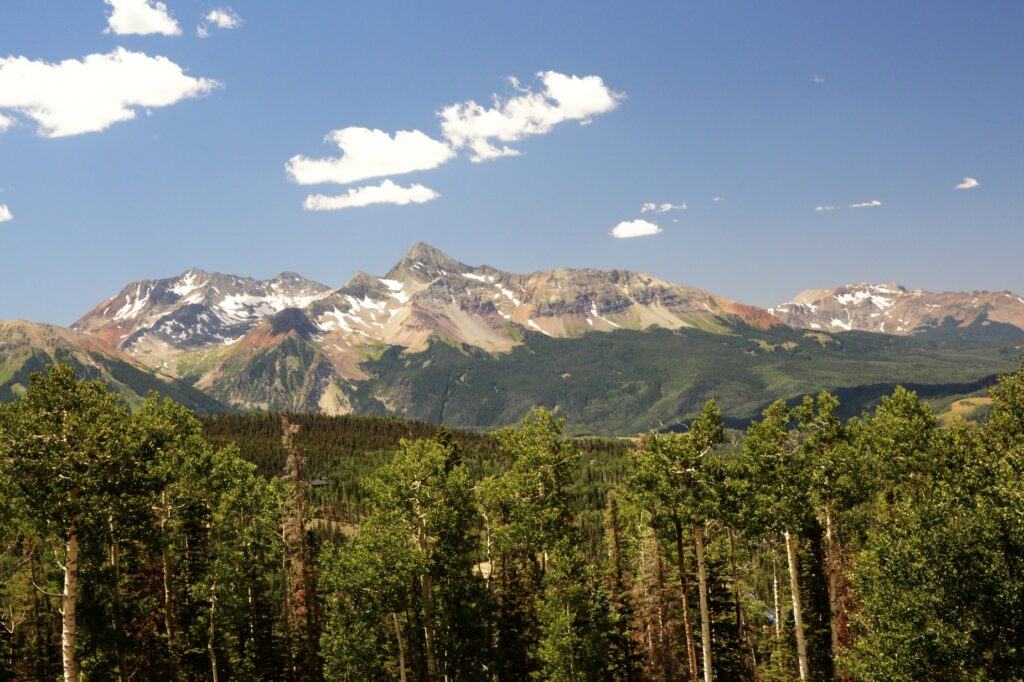
The surrounding mountains were so colorful and beautiful. Looking down, we could see the town snuggled against the mountainsides.

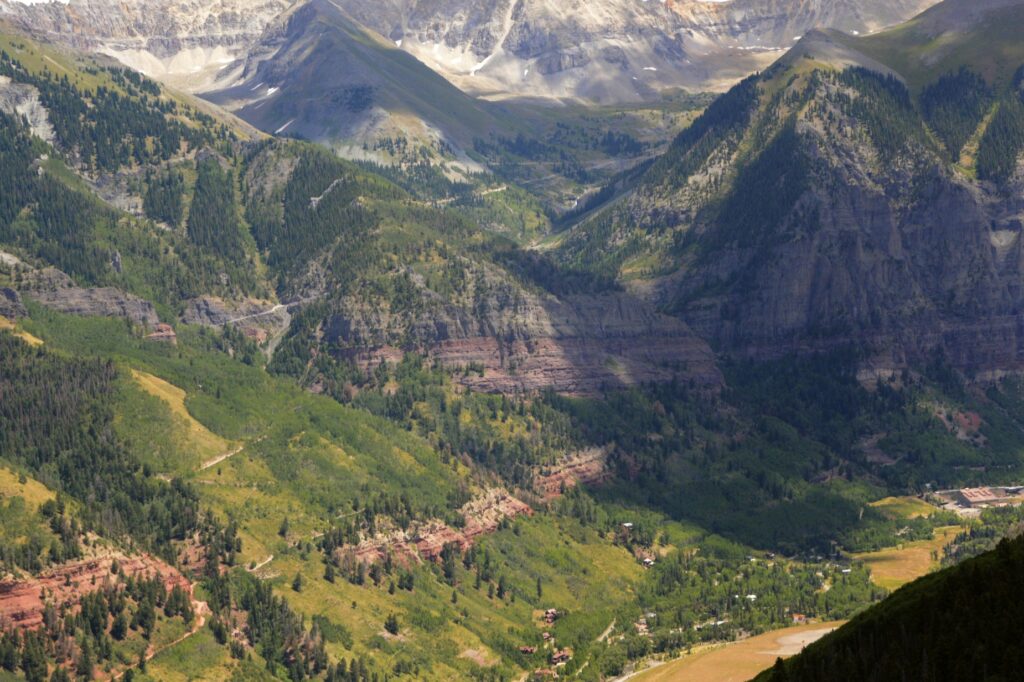
Telluride lies in a valley between steep mountains. In summer, clouds and thunderstorms during the day are common.
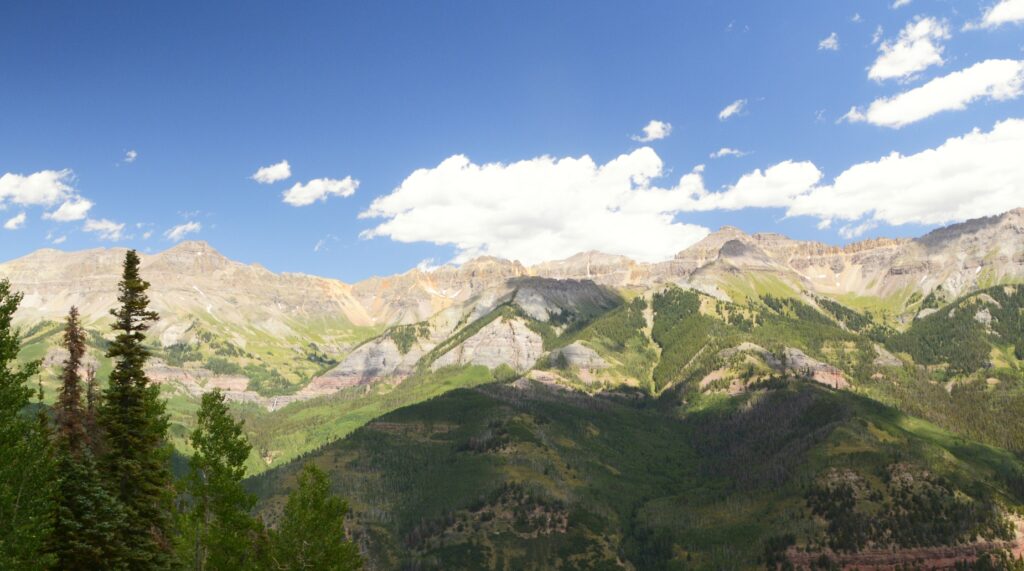
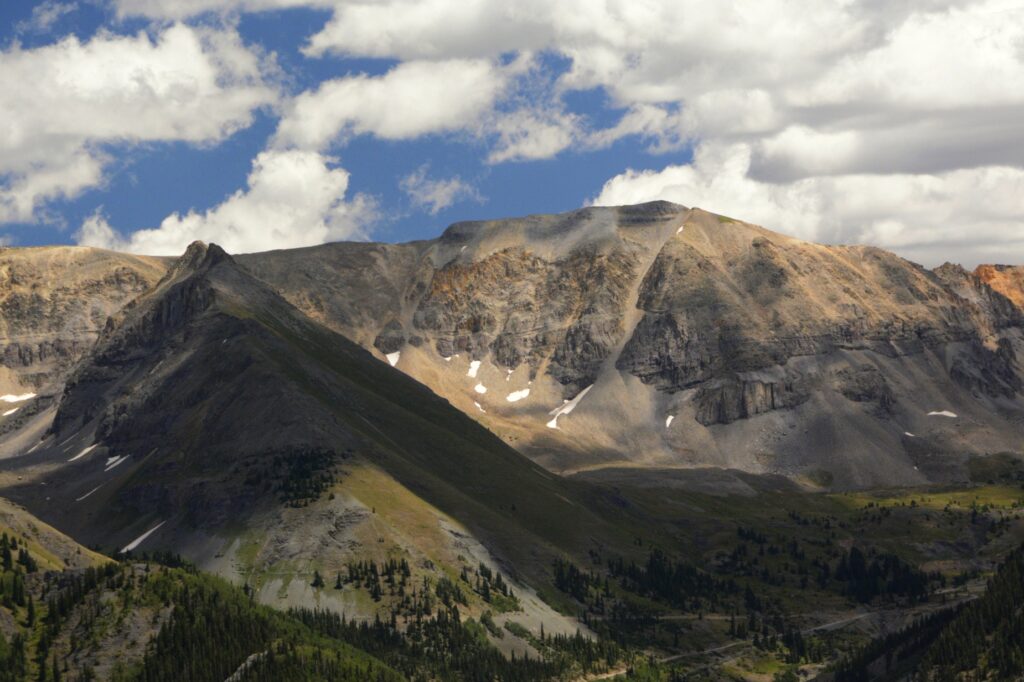
The views from the gondola and at the top of the mountain were amazing. Across the valley, I spied a waterfall called Cornet waterfall. In spite of the summer heat, there were still a few patches of snow remaining on the mountains.
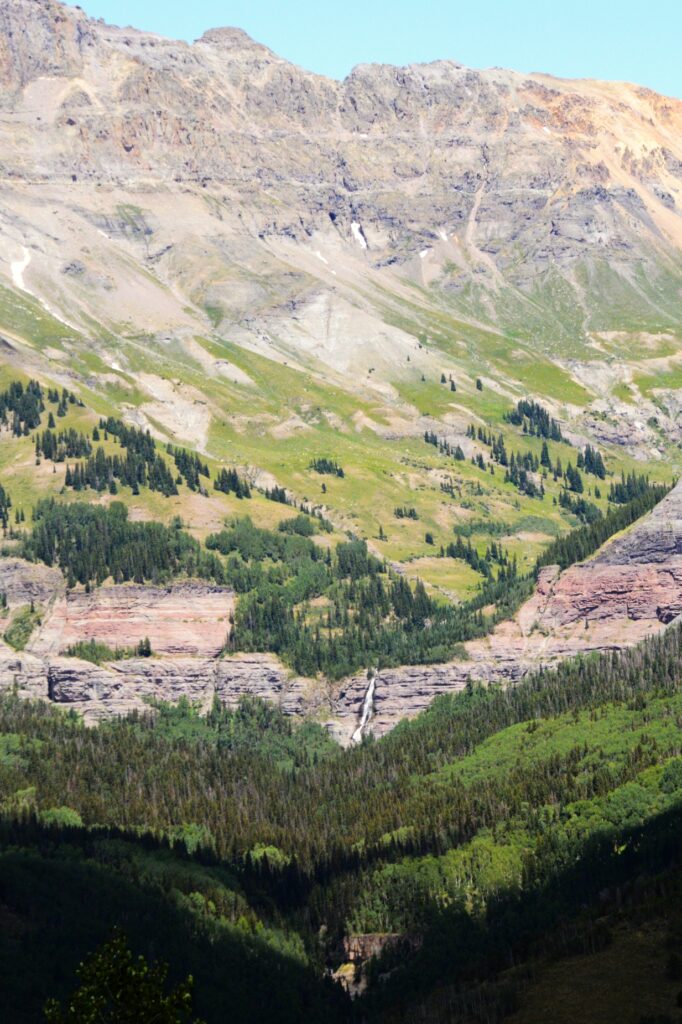
The nature center at San Sophia Station was closed, but outside there were native Colorado flowers planted around the building, including pink yarrow and two different colors of columbine.
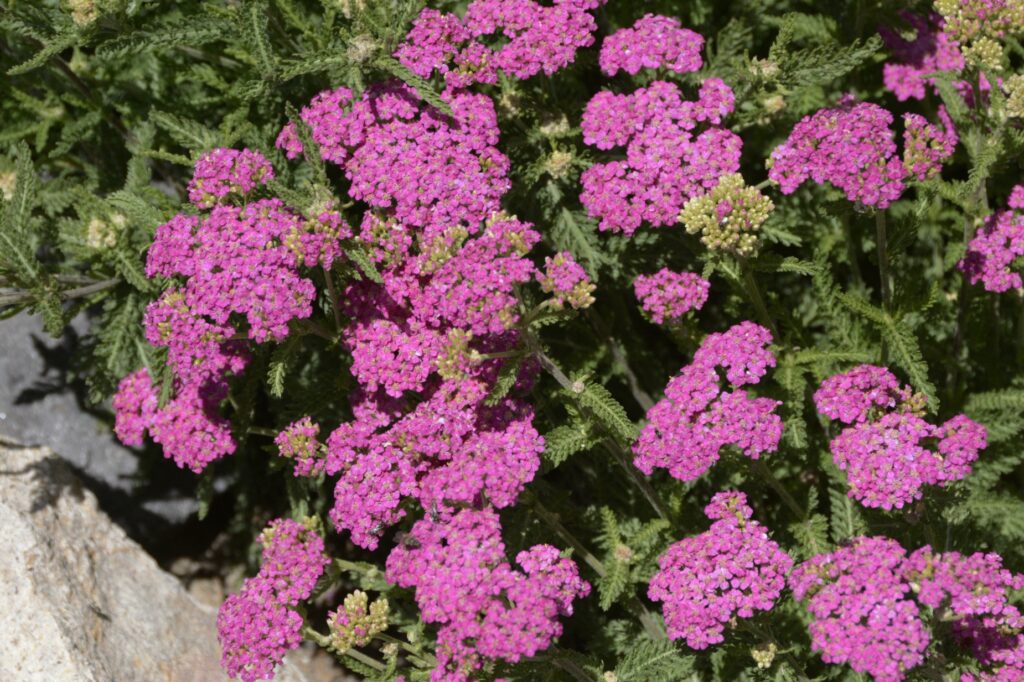
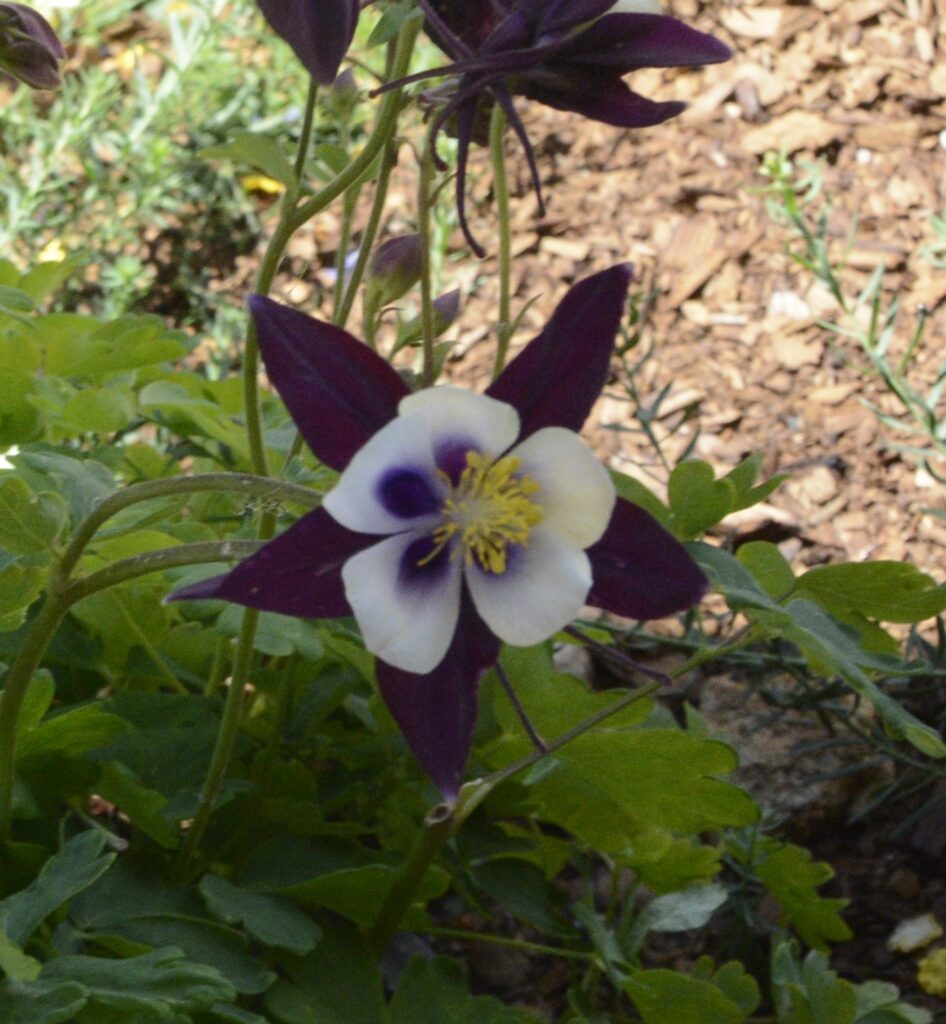
The Rocky Mountain Columbine is the state flower of Colorado.
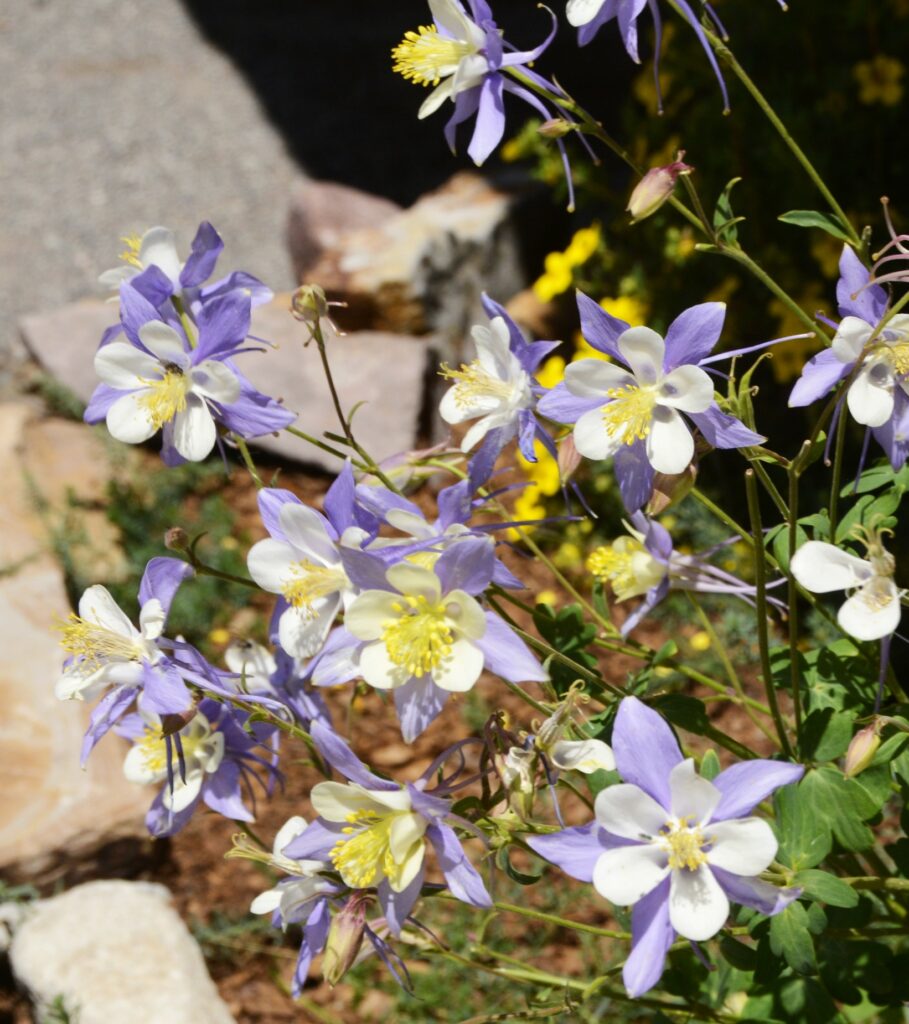
We hopped back on the gondola and rode it down to Mountain Village. It is mostly condos and a ski resort area.
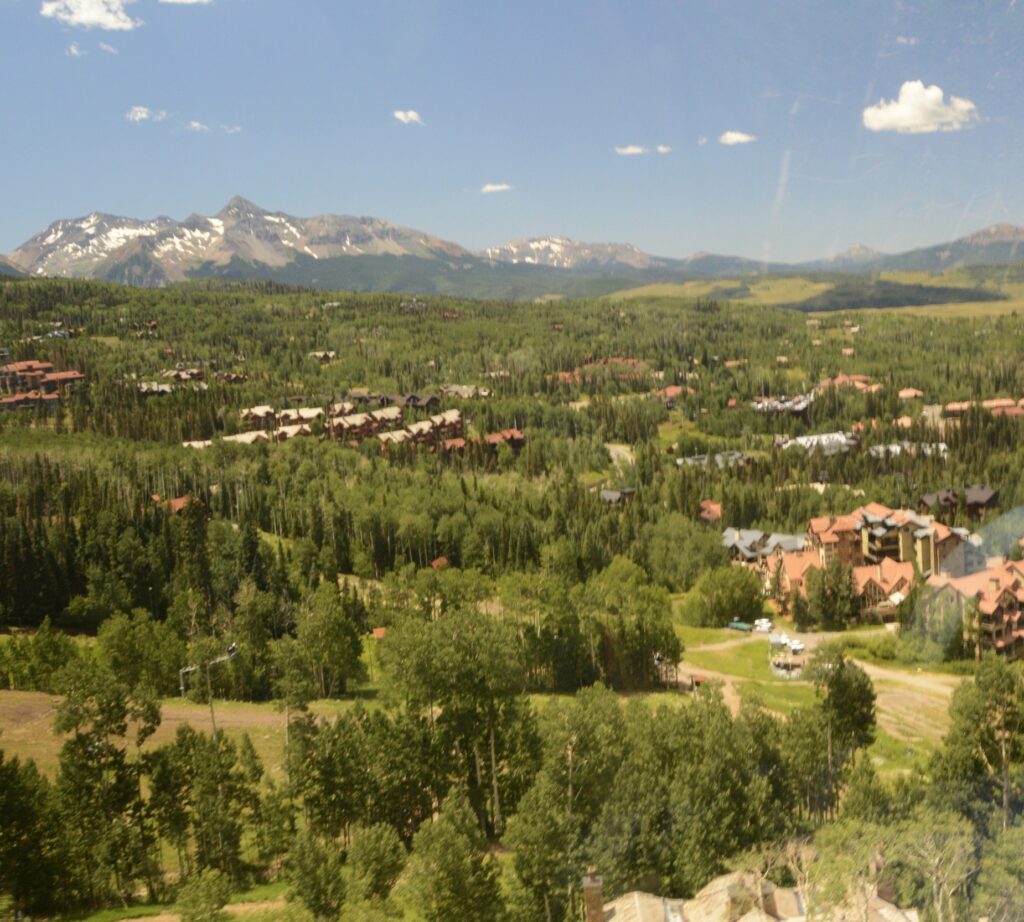
There is another gondola that goes to Mountain Plaza shopping area, but we weren’t there to shop, so we took a break outside on the patio area and ate a snack we brought with us while enjoying the scenery.
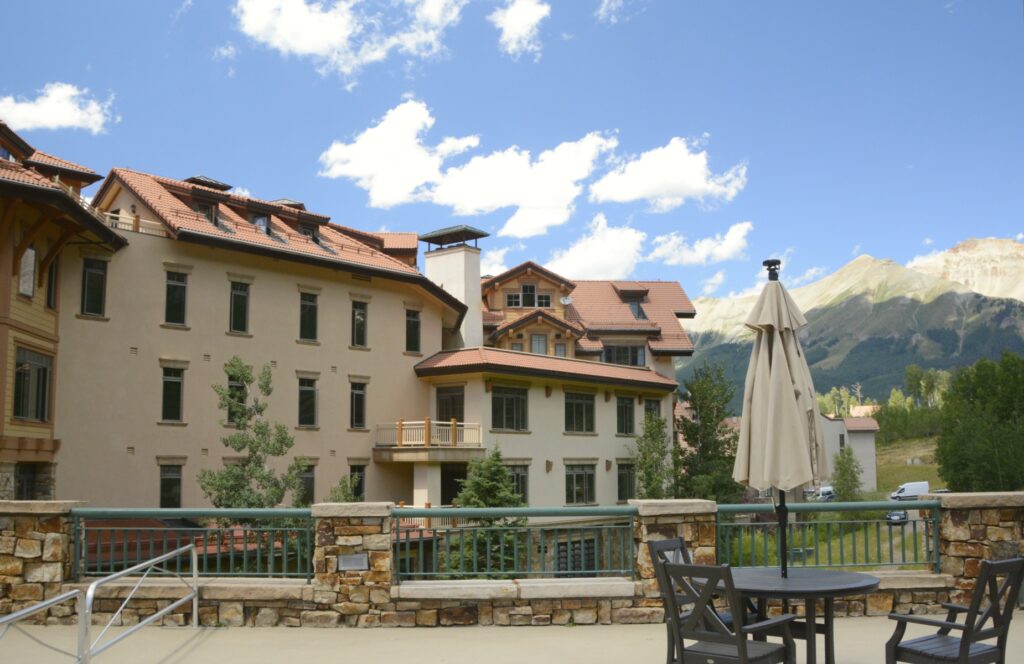
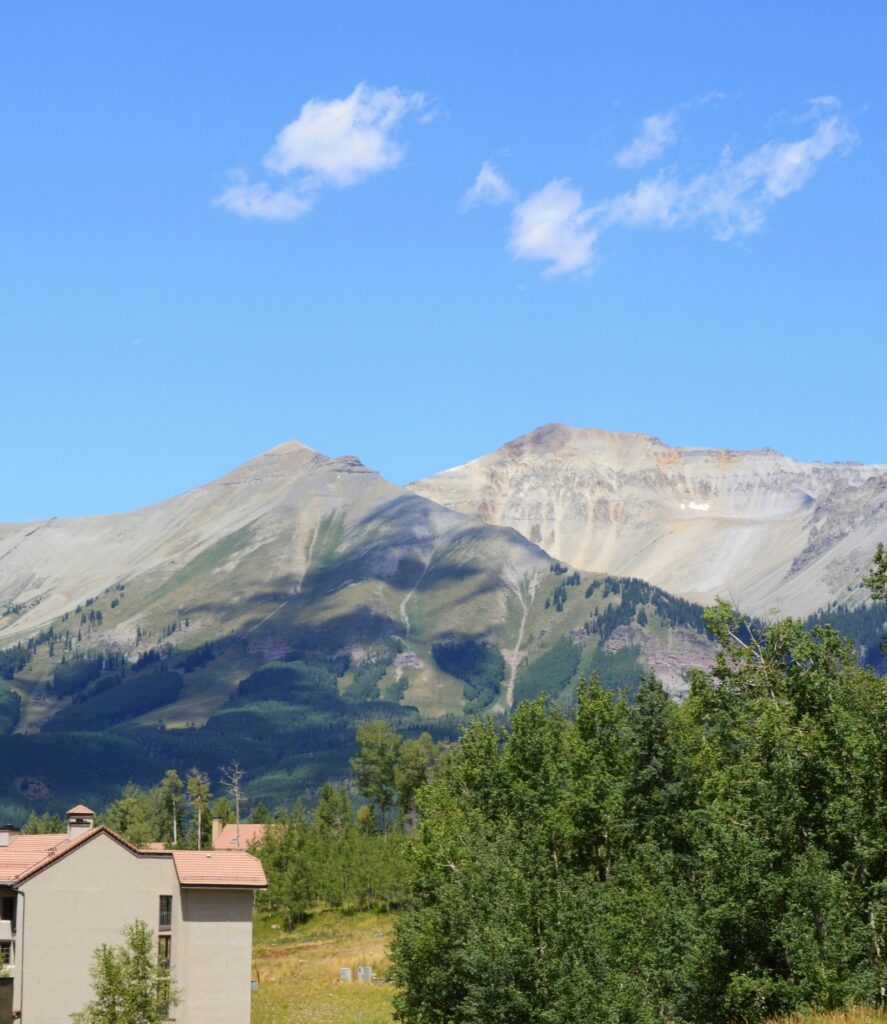
After riding the gondola back up the mountain and down to Telluride again, we hopped on the shuttle. It makes a loop around the town, so we got to see some more of the town while riding to our parking spot. We had one more place to visit before leaving.
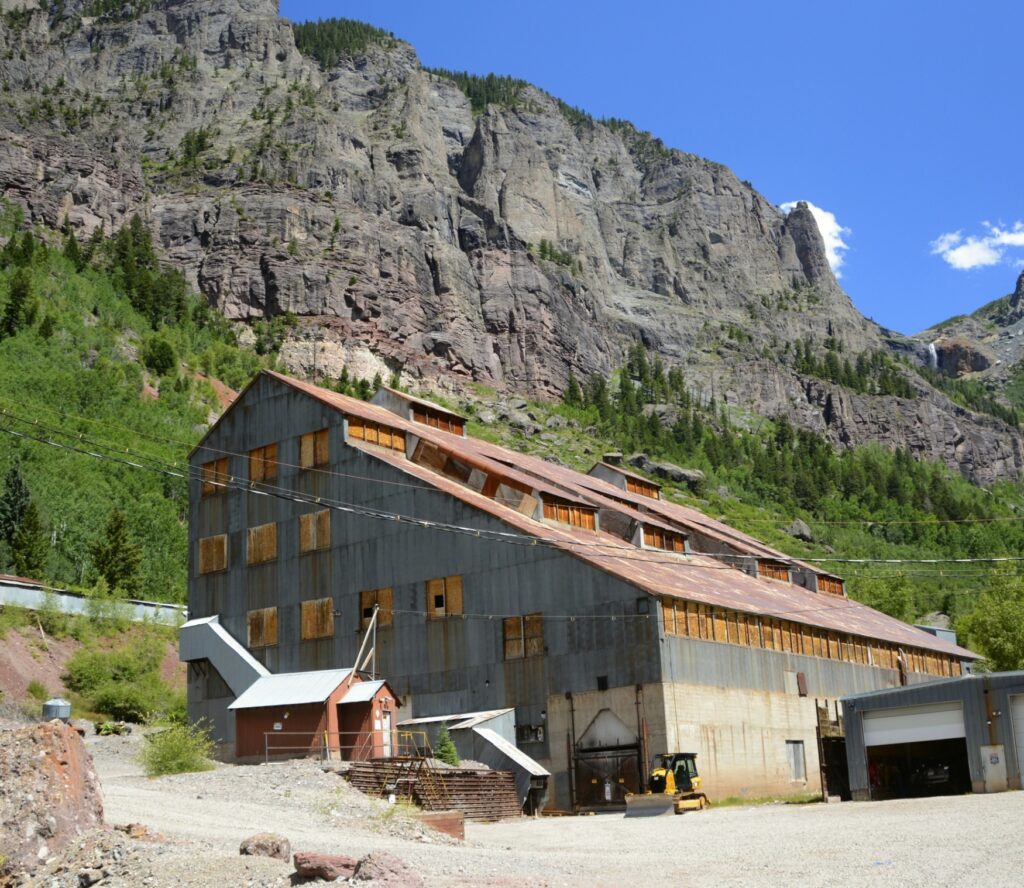
If you drive all the way through Telluride to the end of town, there is a parking lot by an old mining building, Pandora Mill. From there, you can see Bridal Veil Falls. At 365 feet tall, It is the tallest free-falling falls in Colorado.
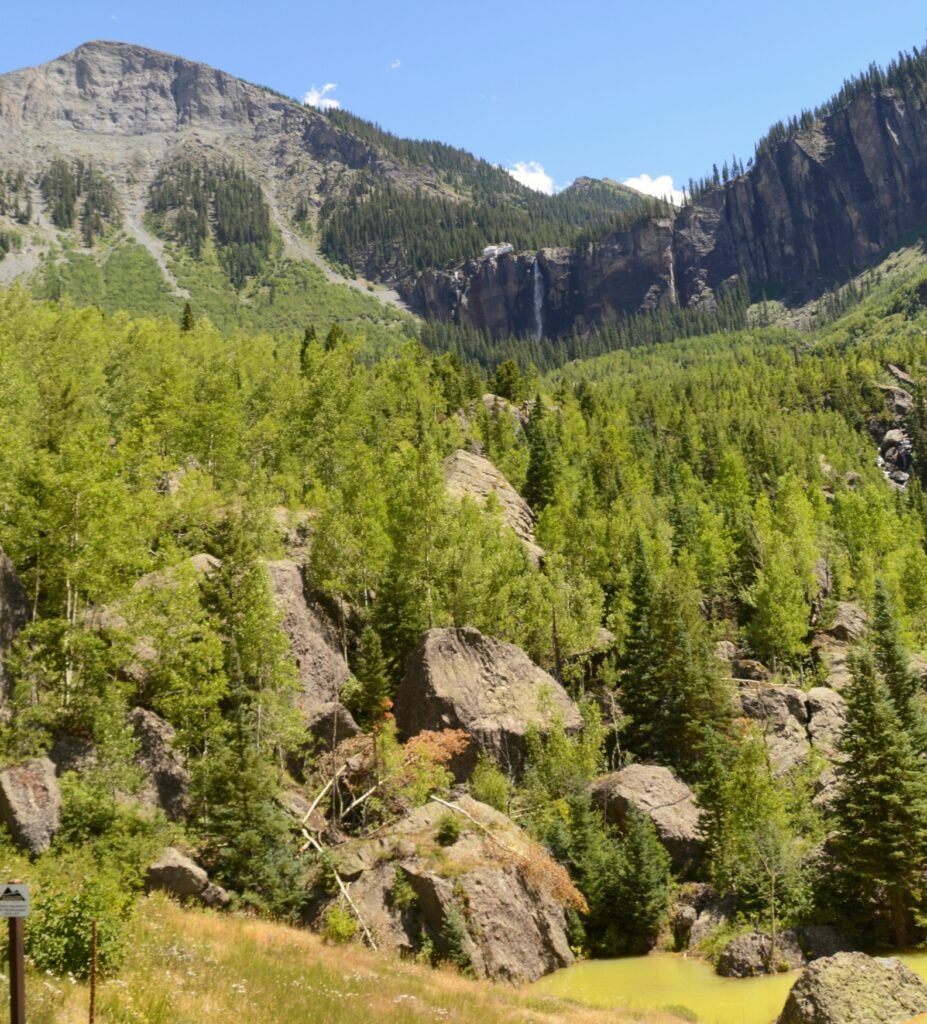
A privately owned, historic power plant sits at the brink of the falls.
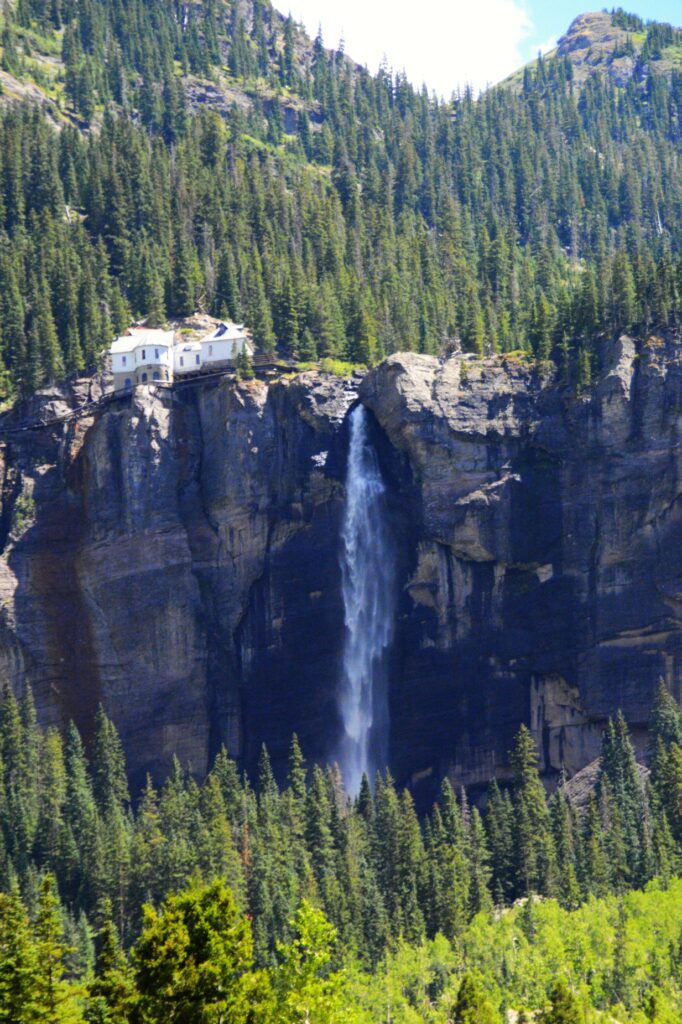
All the parking spots were taken, so I double parked and quickly jumped out and took a few photos of the waterfalls. I moved the truck to a parking spot near the old mill when I spotted another waterfall. Researching the name of this, I concluded that it is called Marshall Creek Falls.
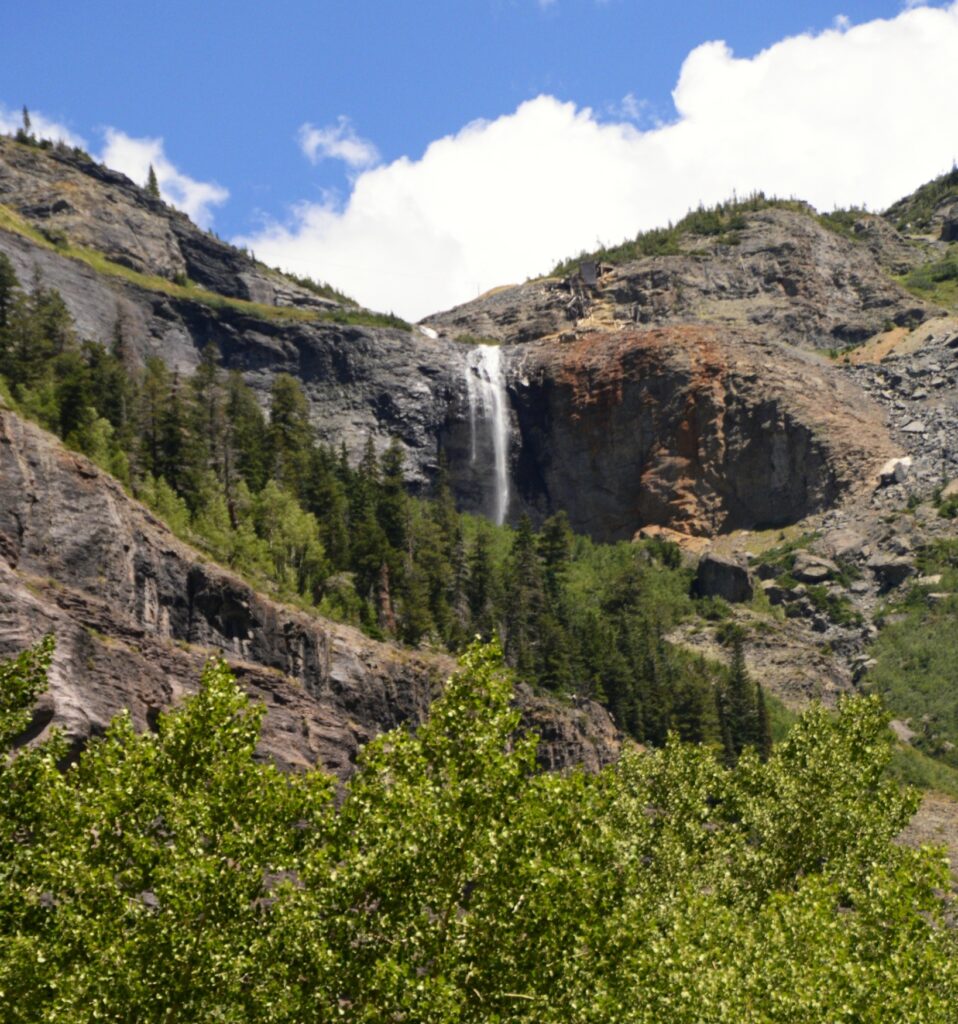
As I zoomed out on my camera, I was able to get both falls in one photo.
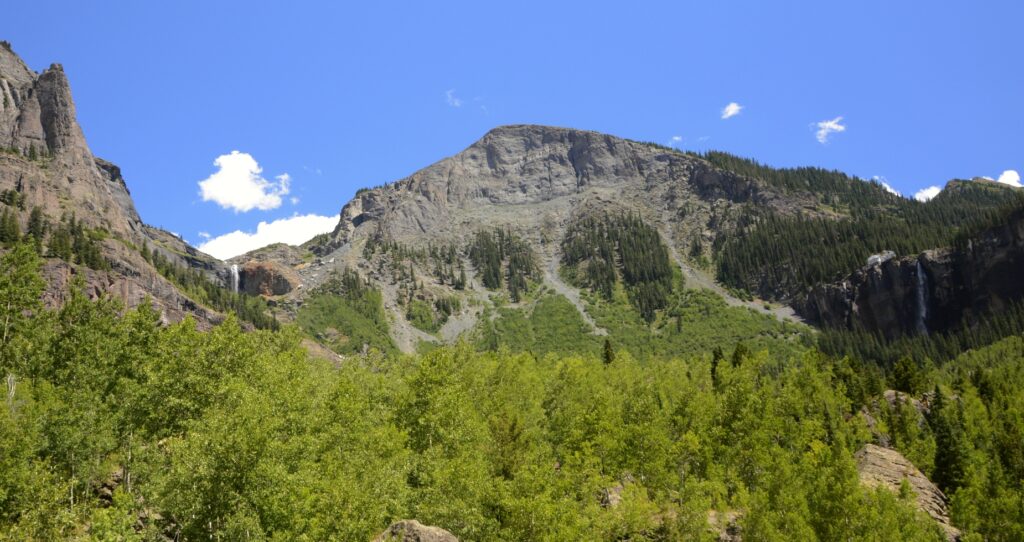
It was late afternoon so we decided to head home. As we drove a few miles out of town, I stopped for one last look. In the distance was Bridal Veil Falls at the end of the box canyon that holds the historic town of Telluride. What a view!
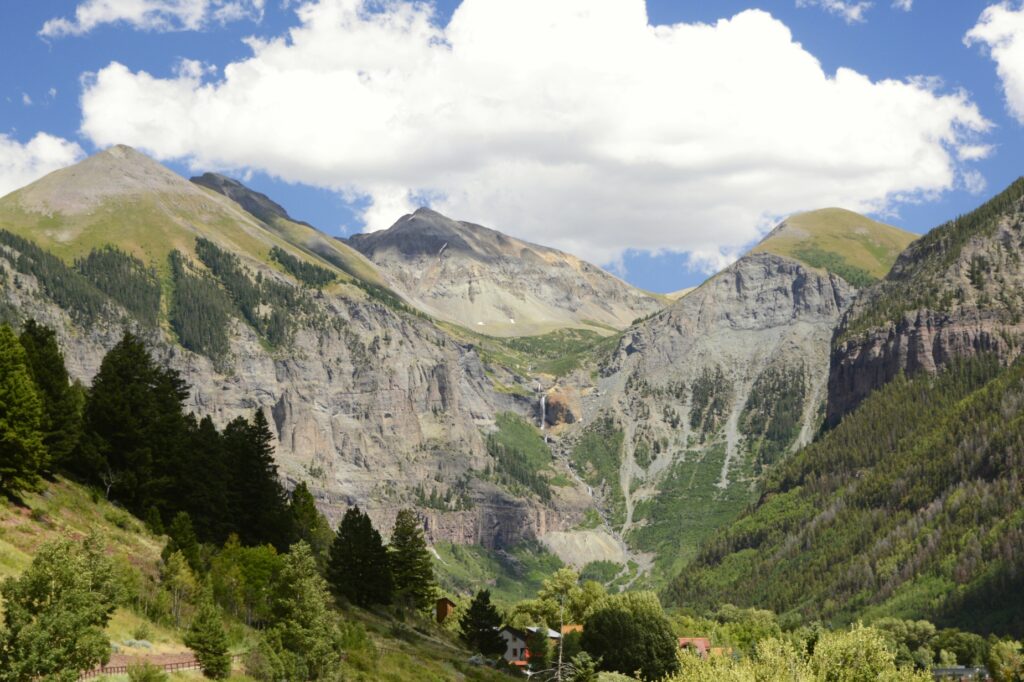
On our way home, I stopped at this roadside pull out and couldn’t resist more photos of these scenic mountains. Now the evening light made them look even more beautiful.
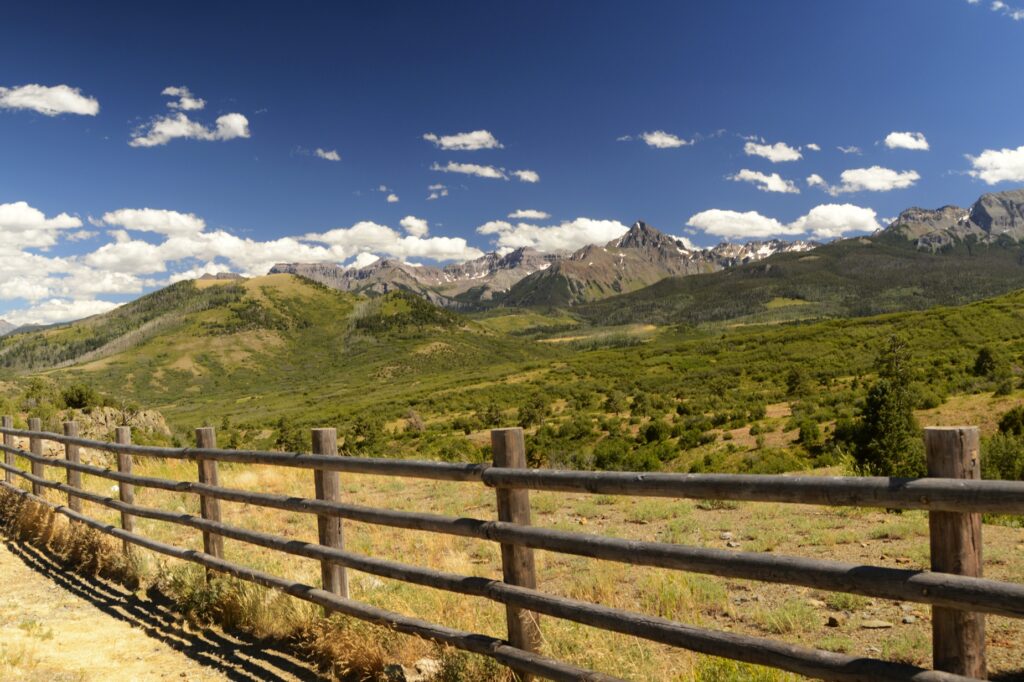
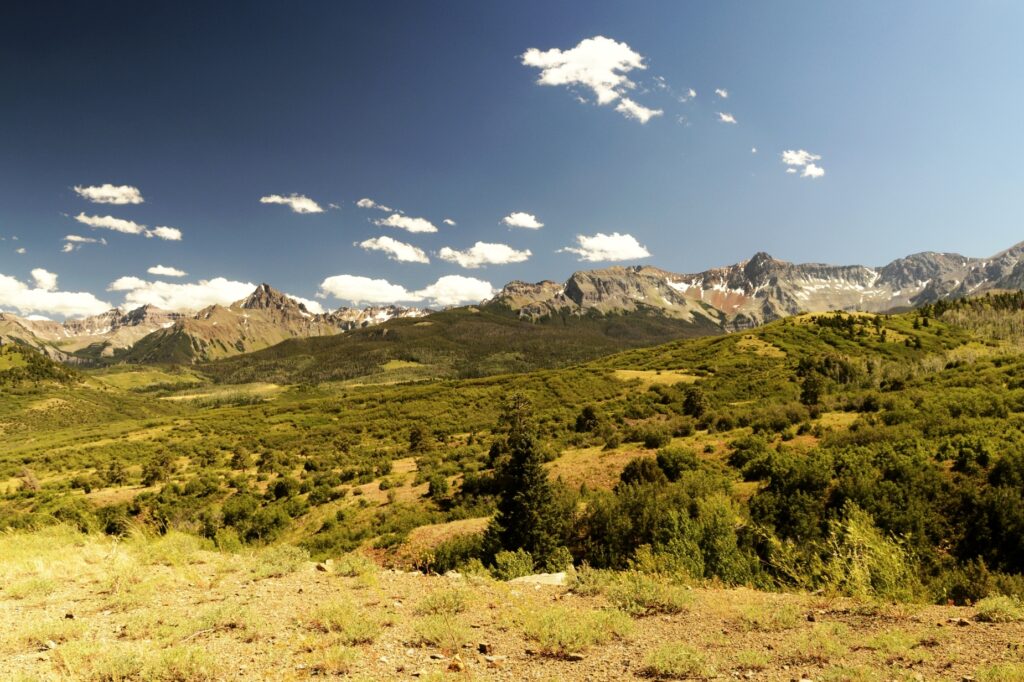
We had a nice day trip to Telluride. I would have liked to have spent more time there, but we had a long drive home. Maybe someday we will return.
“For all God’s words are right, and everything He does is worthy of our trust. He loves whatever is just and good; the earth is filled with His tender love. He merely spoke, and the heavens were formed and all the galaxies of stars. He made the oceans, pouring them into His vast reservoirs. Let everyone in all the world–men, women, and children–fear the Lord and stand in awe of Him. For when He but spoke, the world began!” —-Psalm 33:4-9


